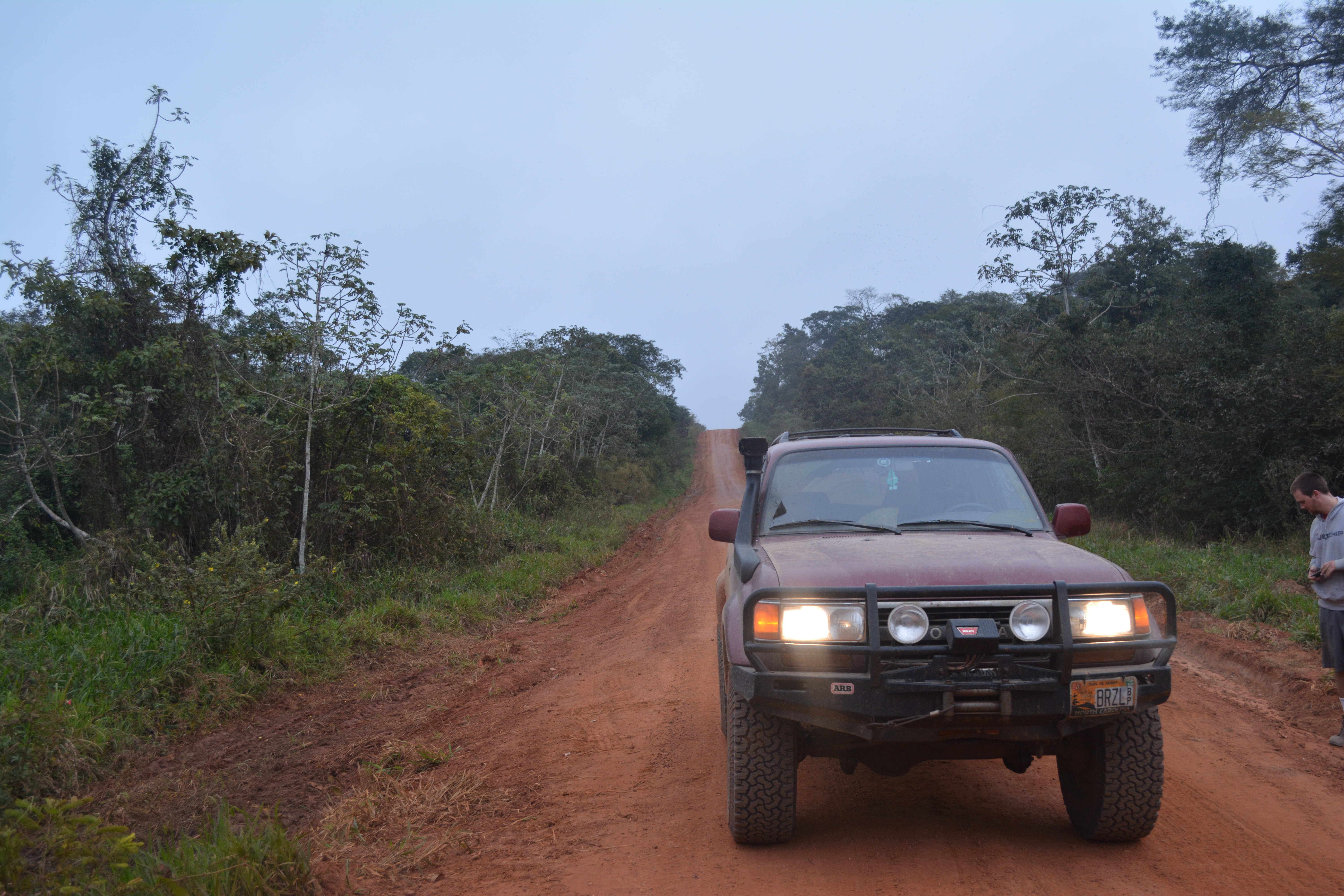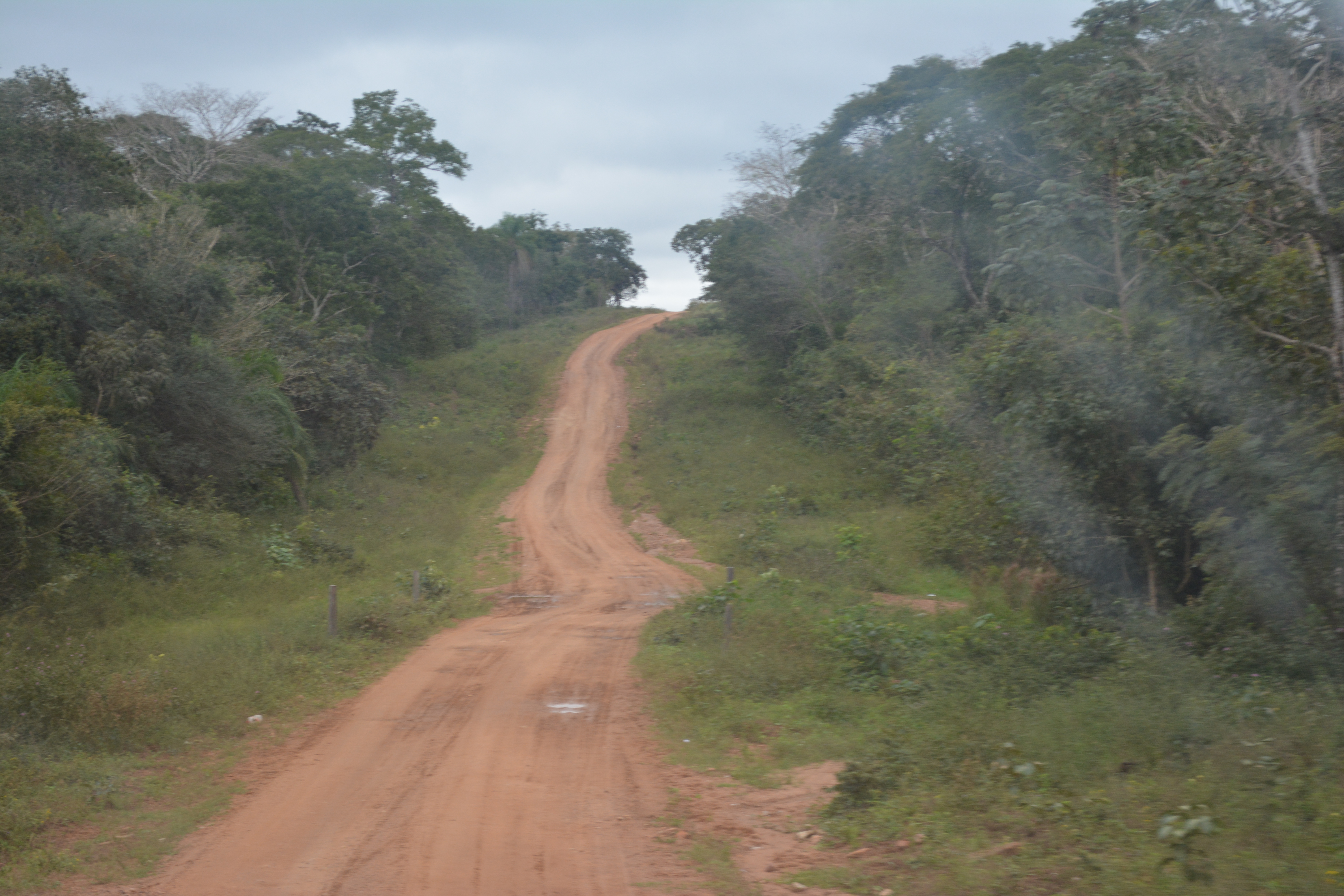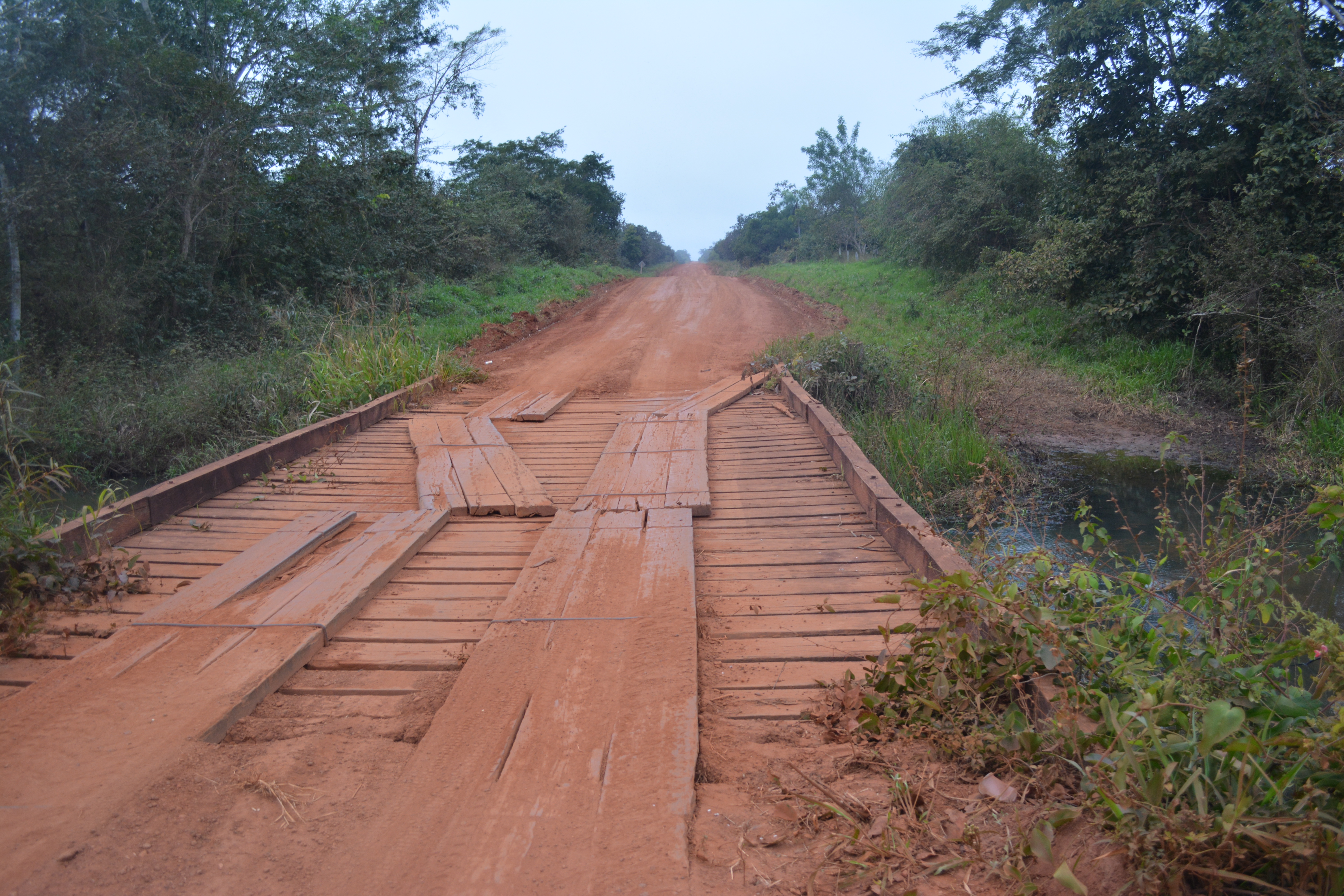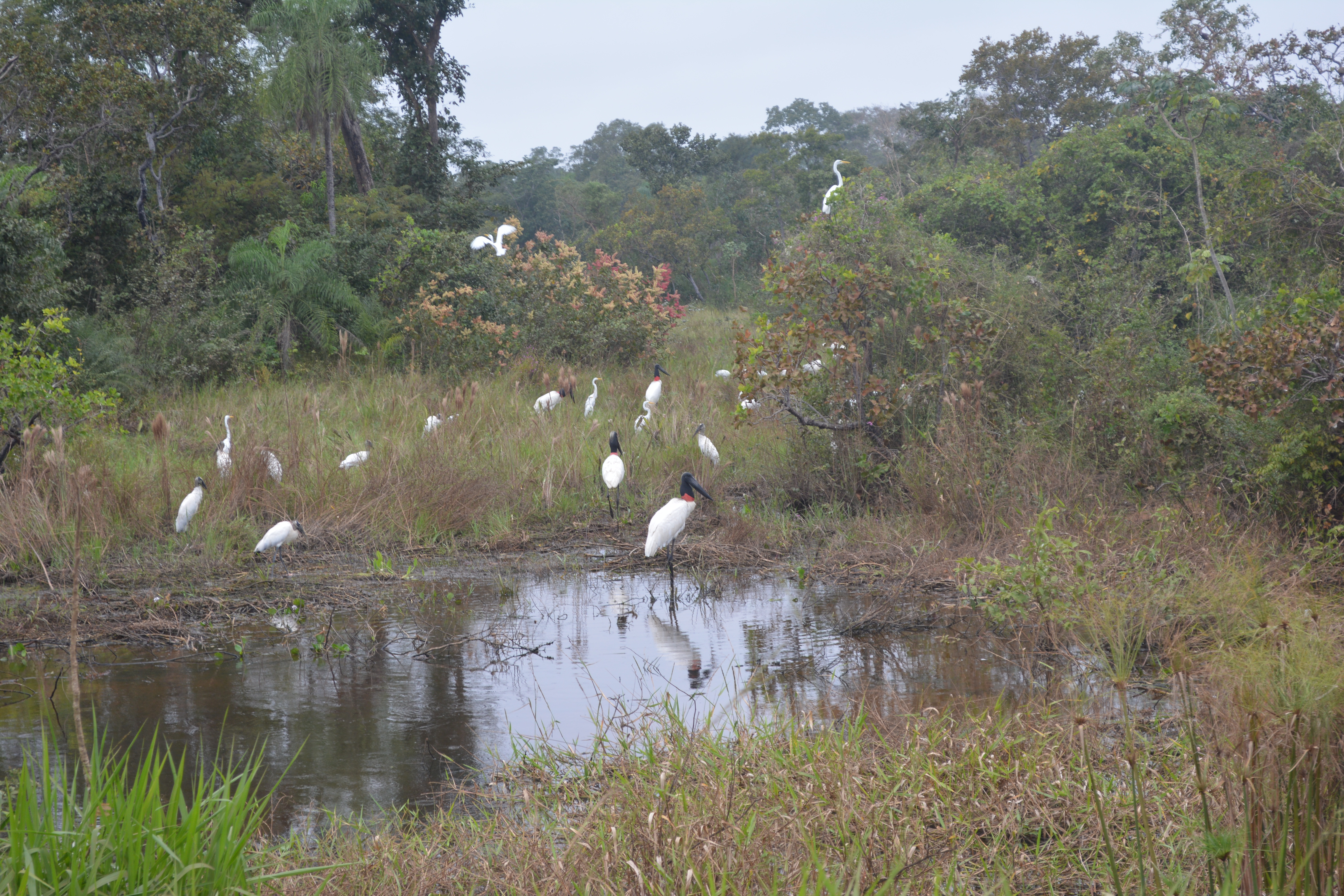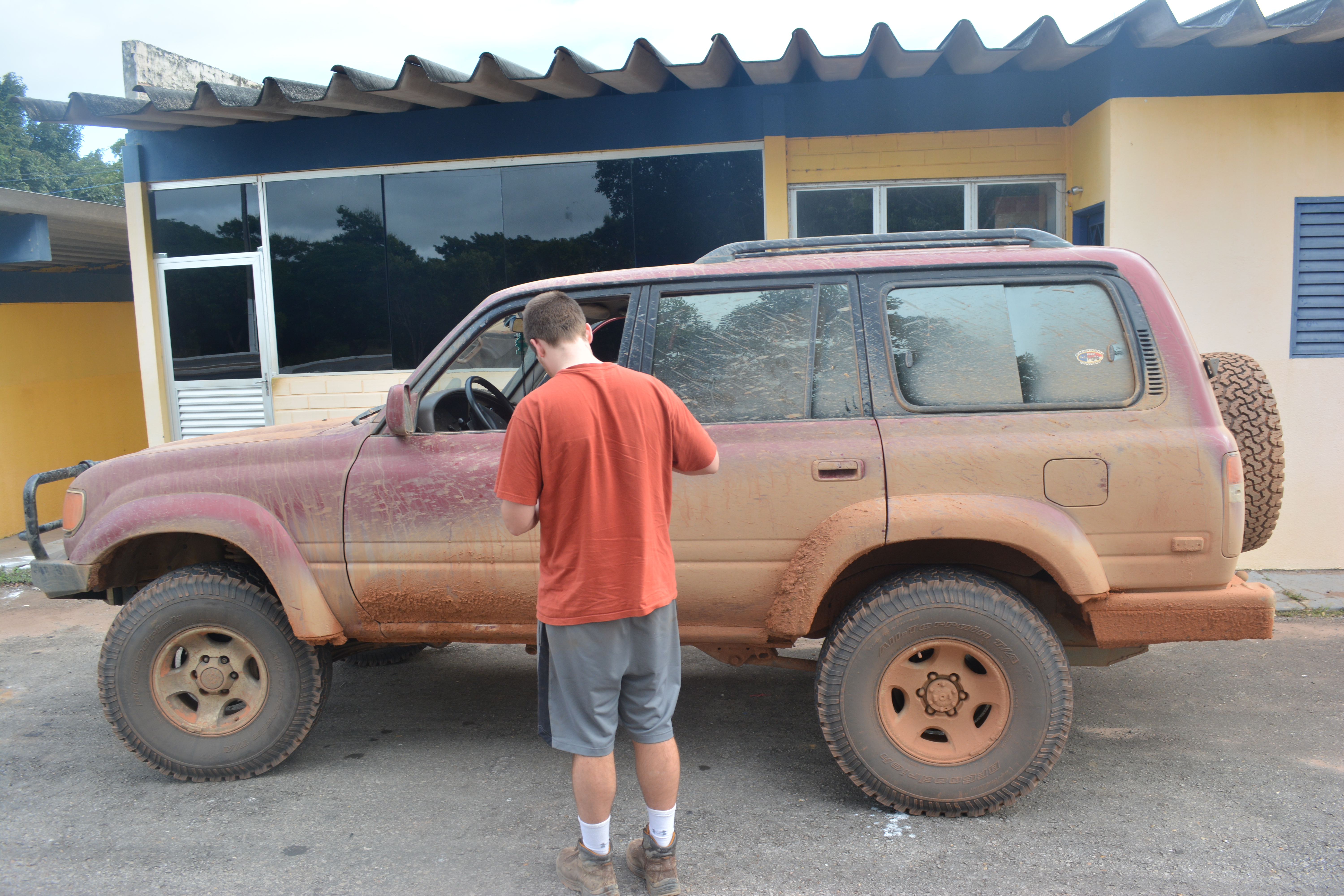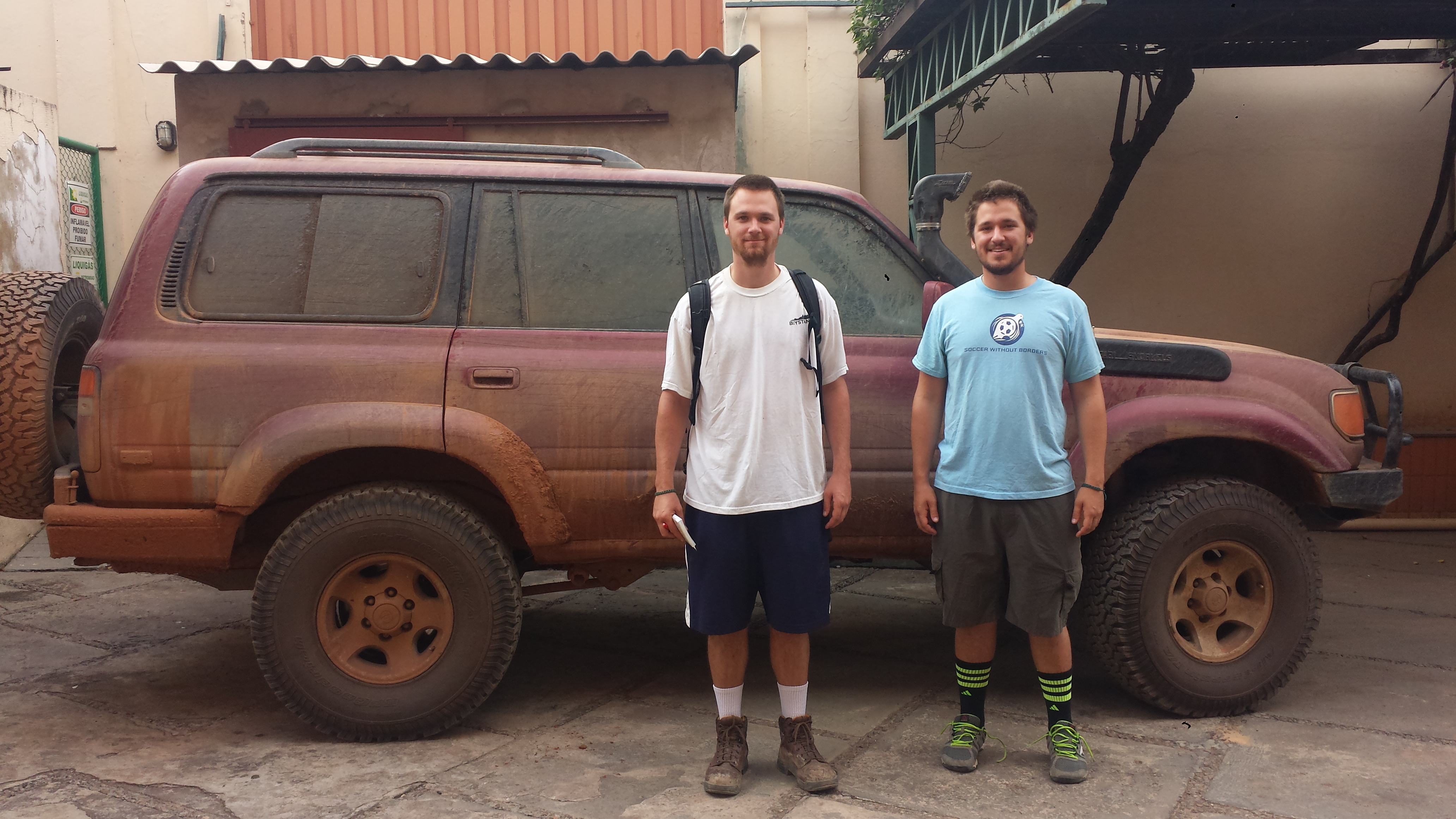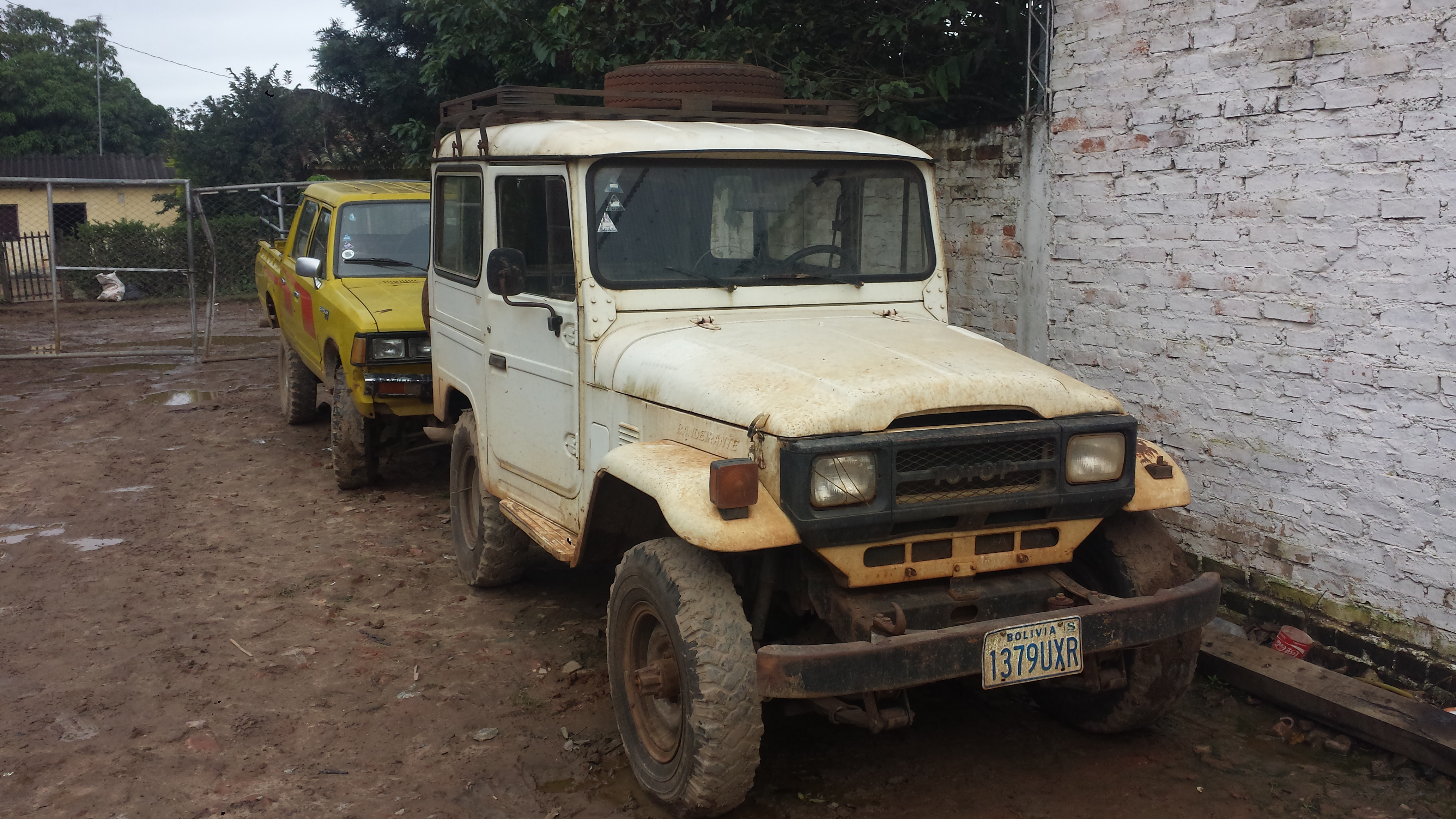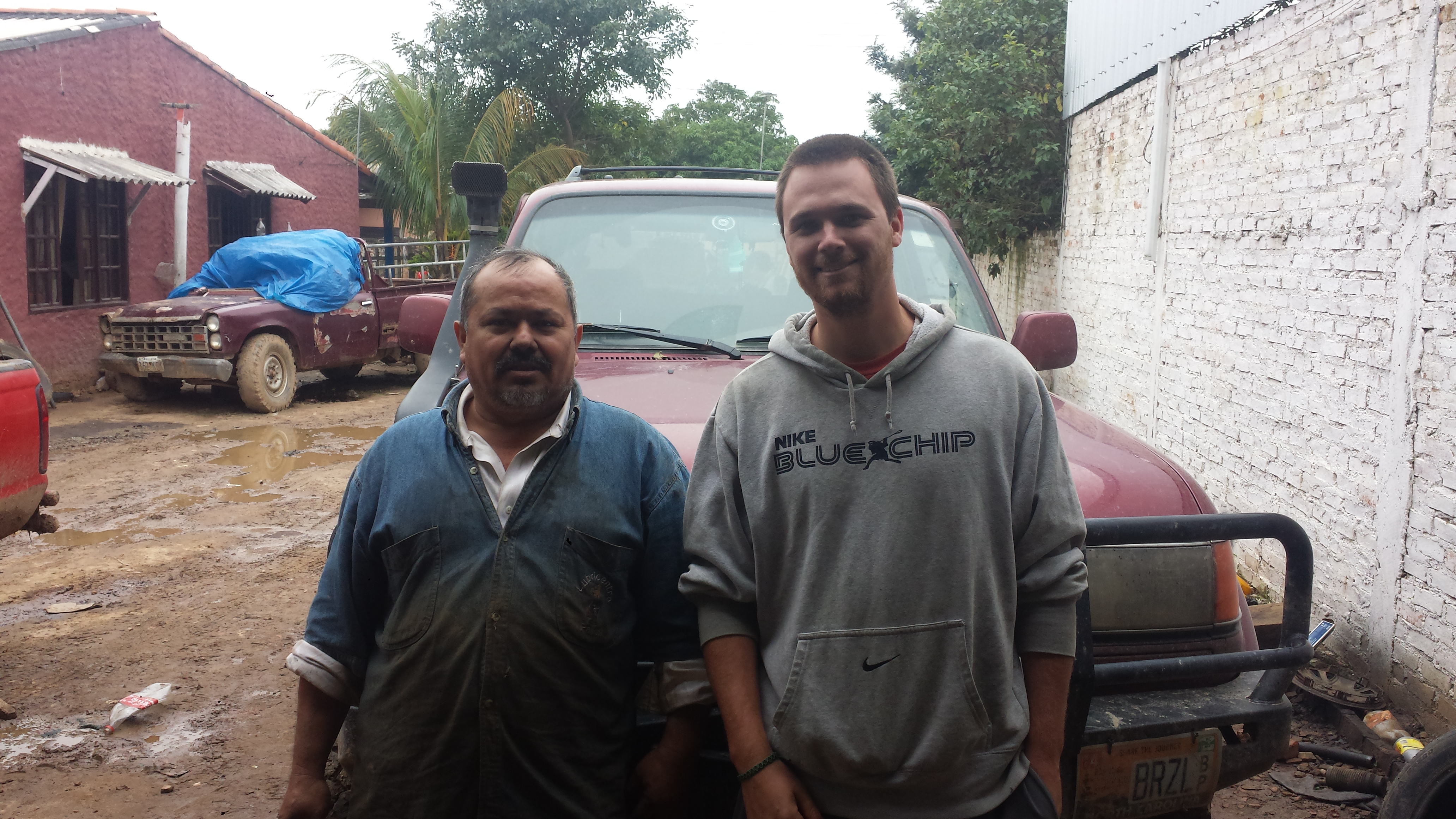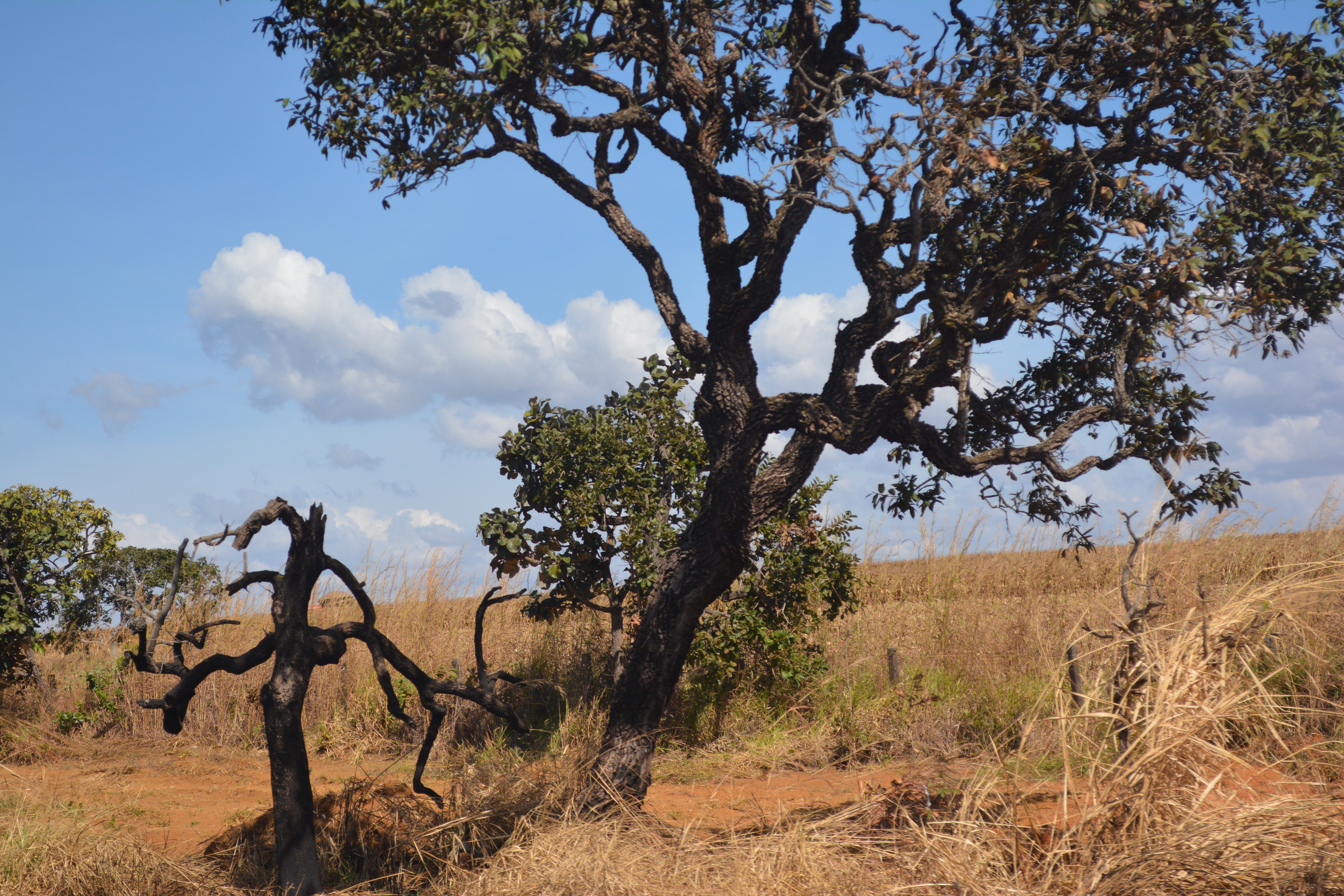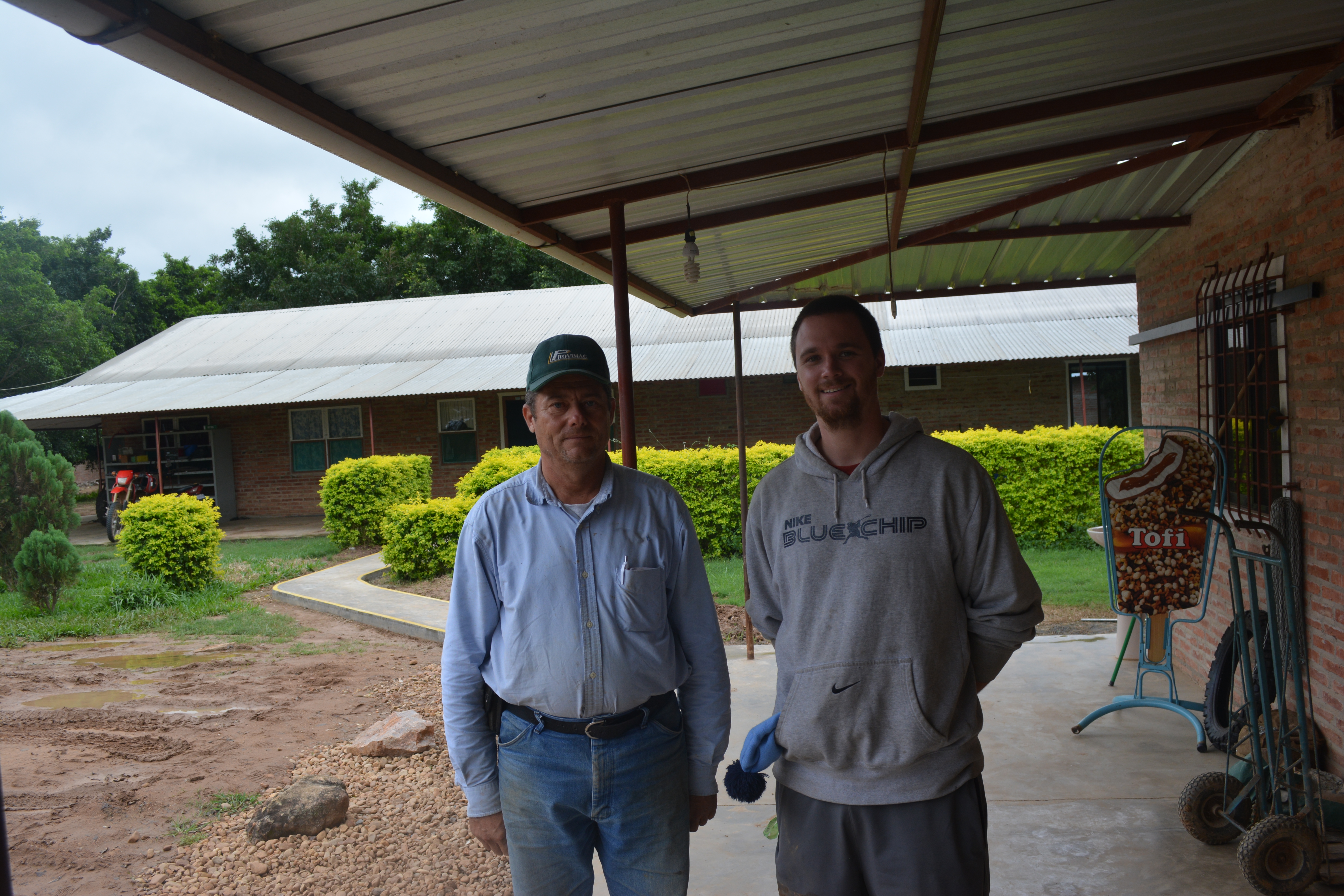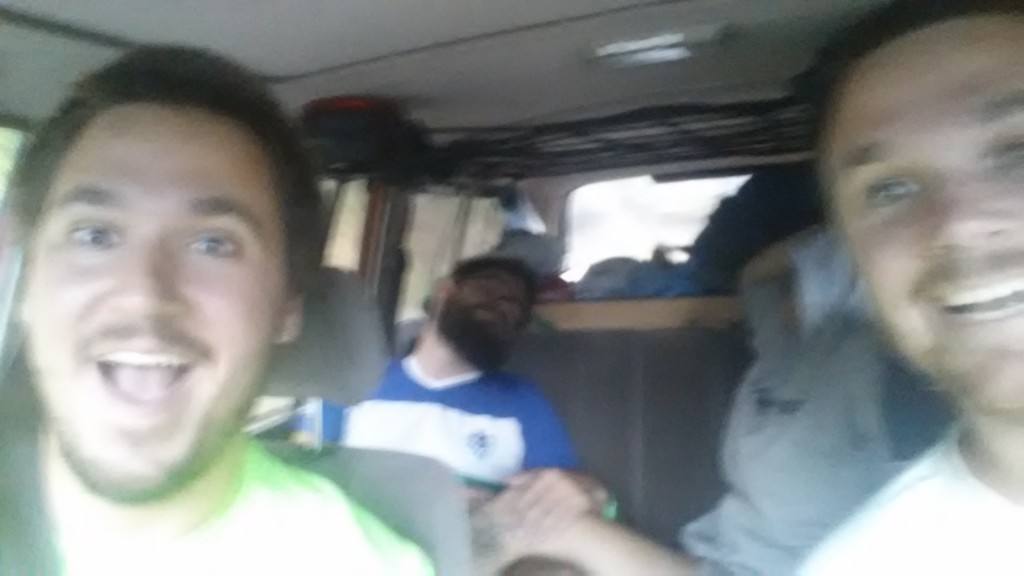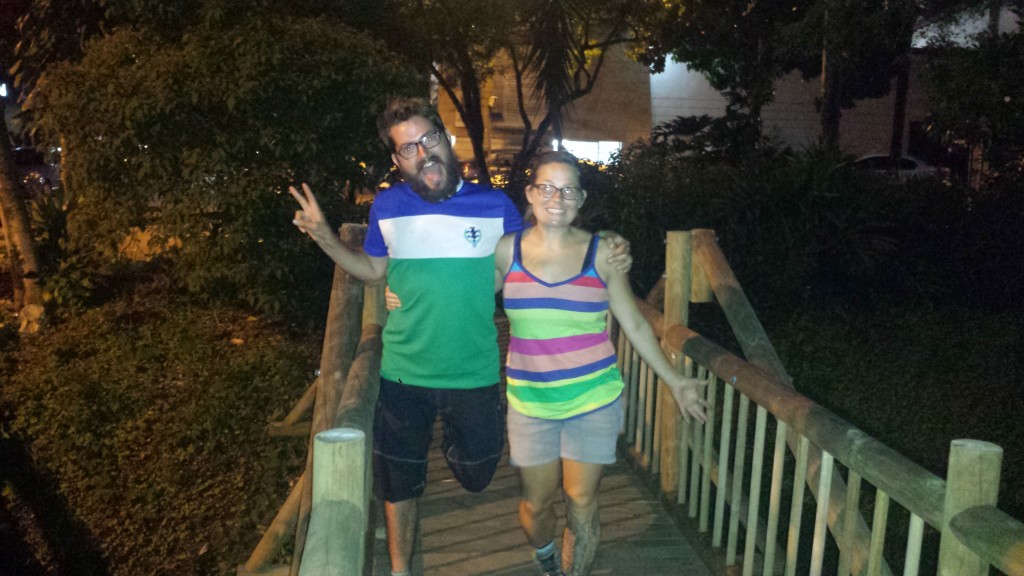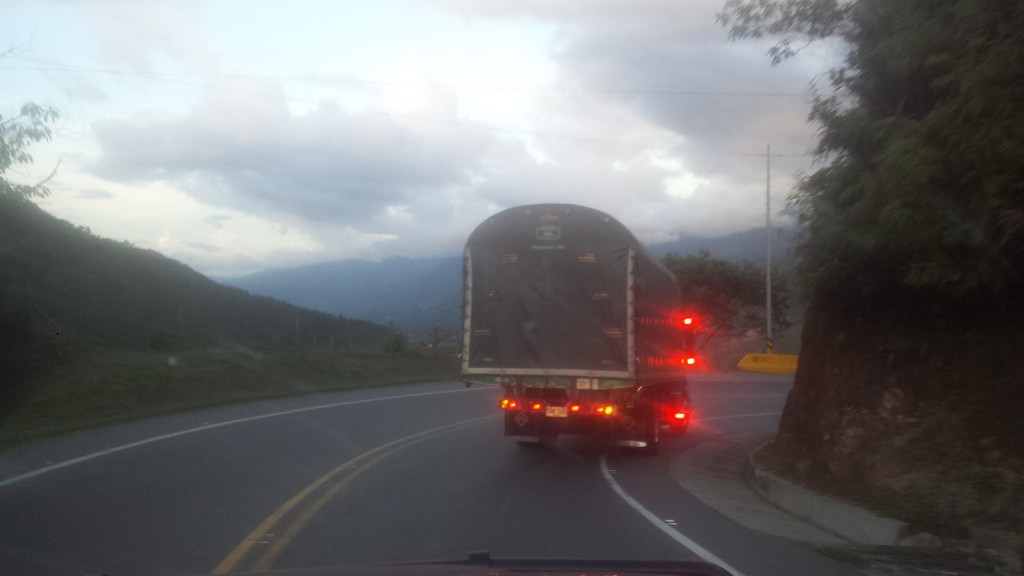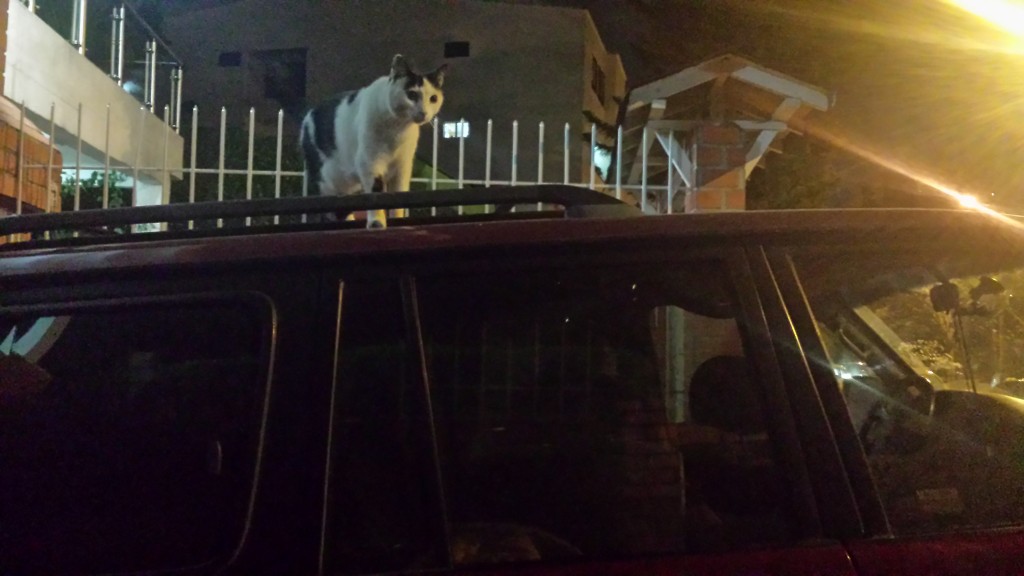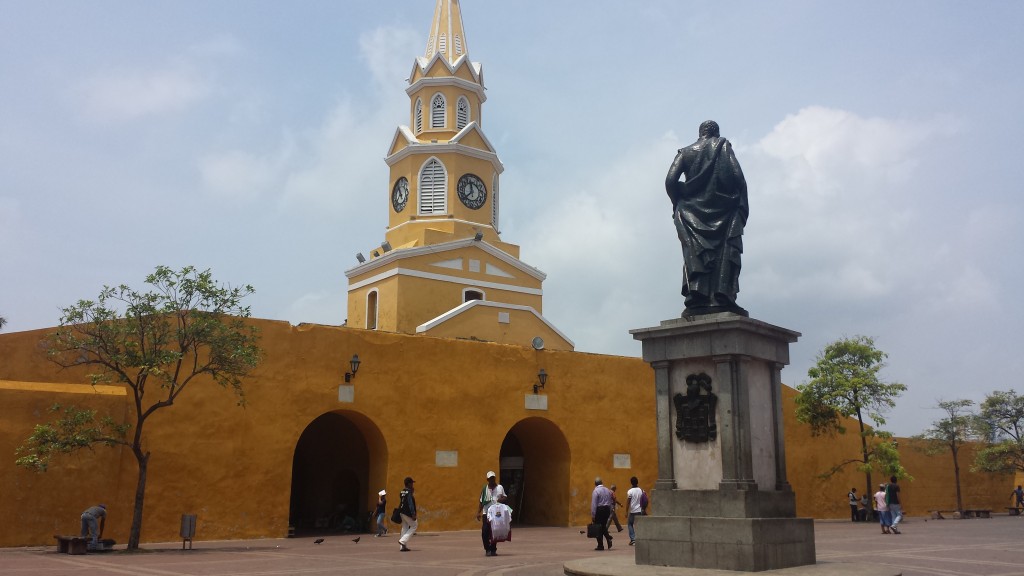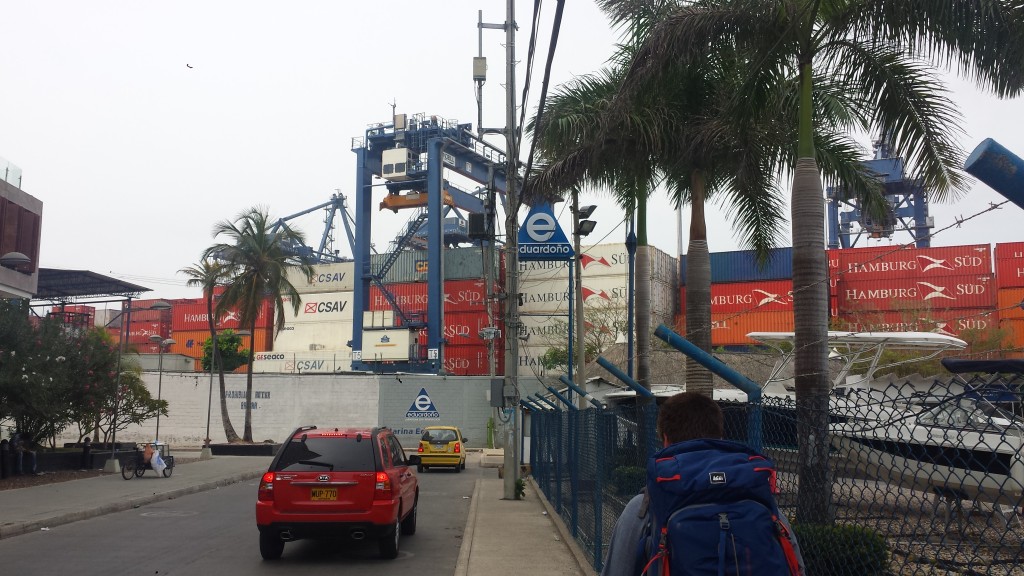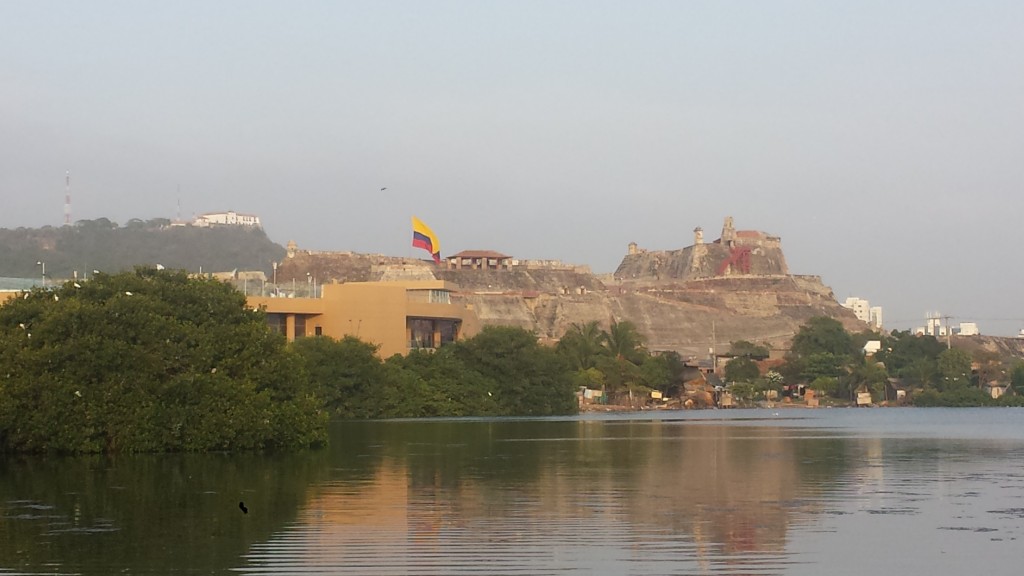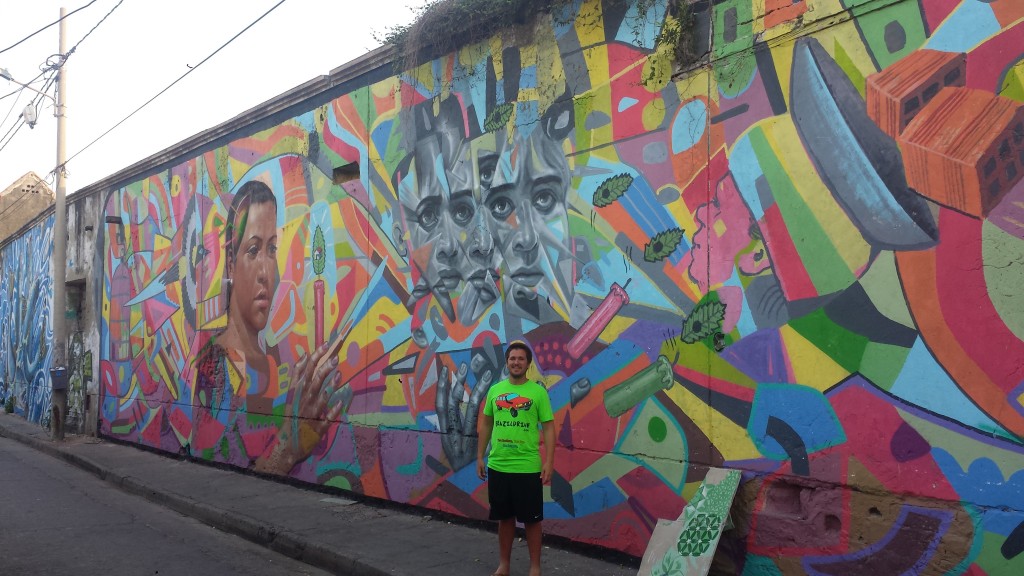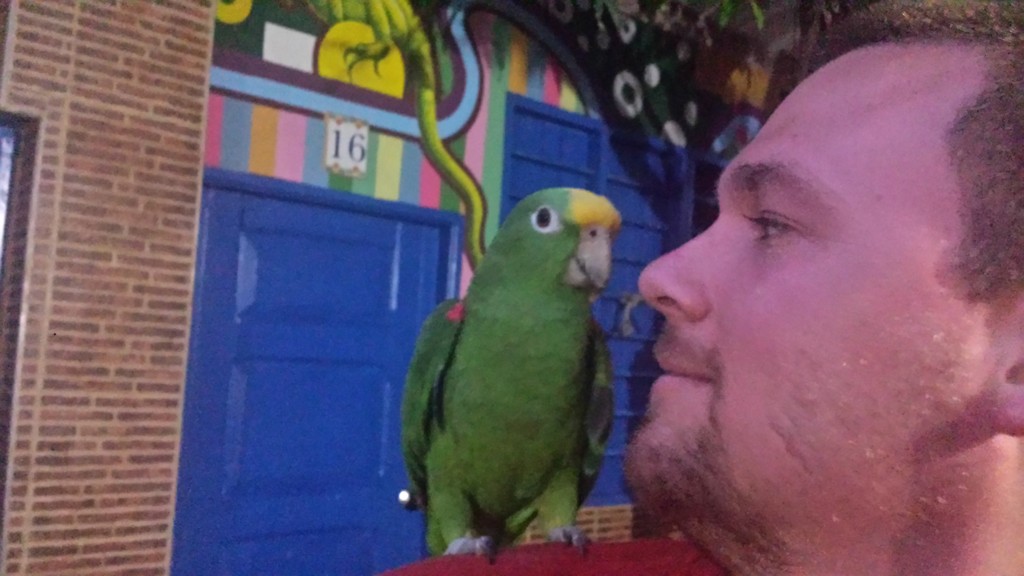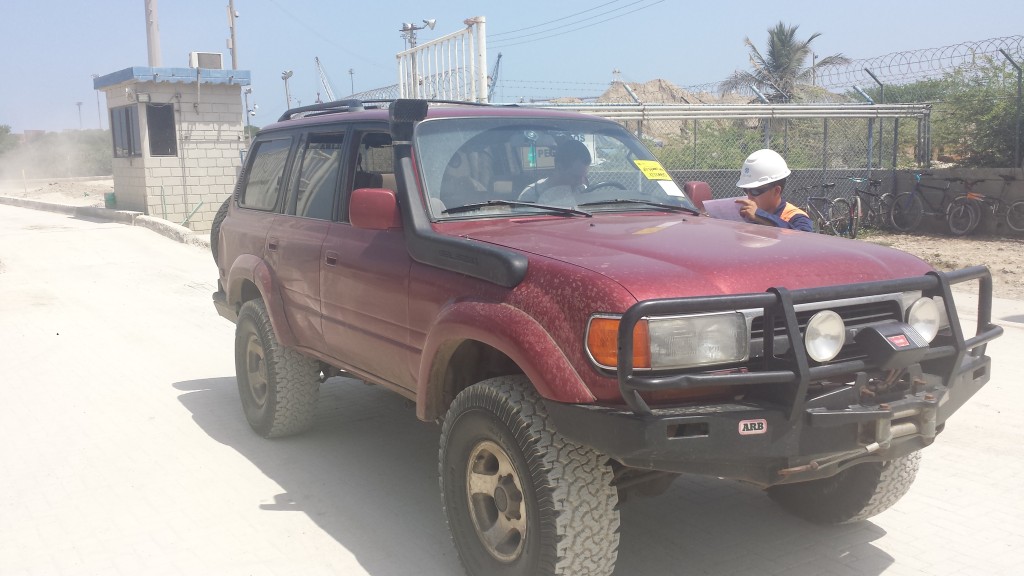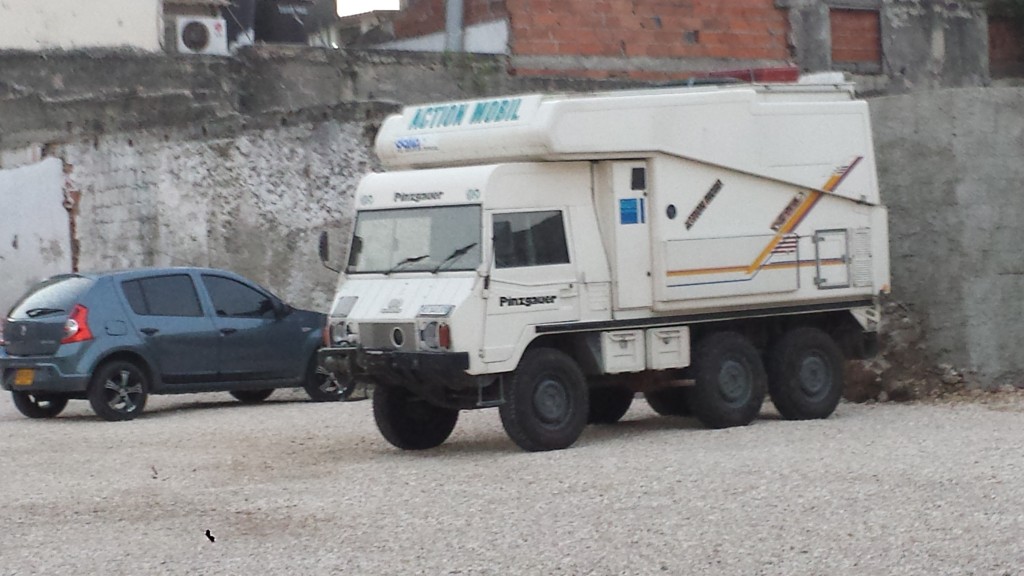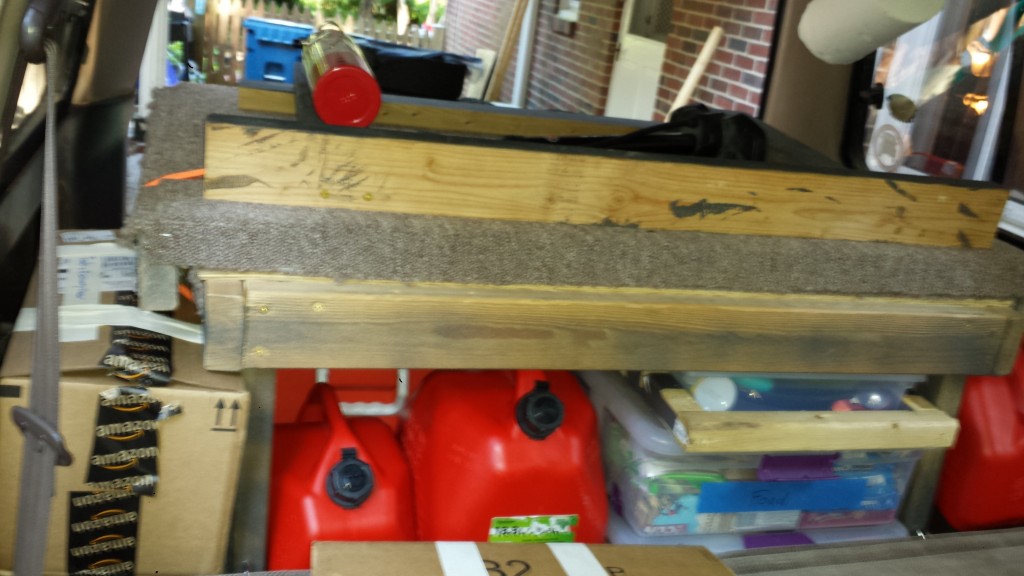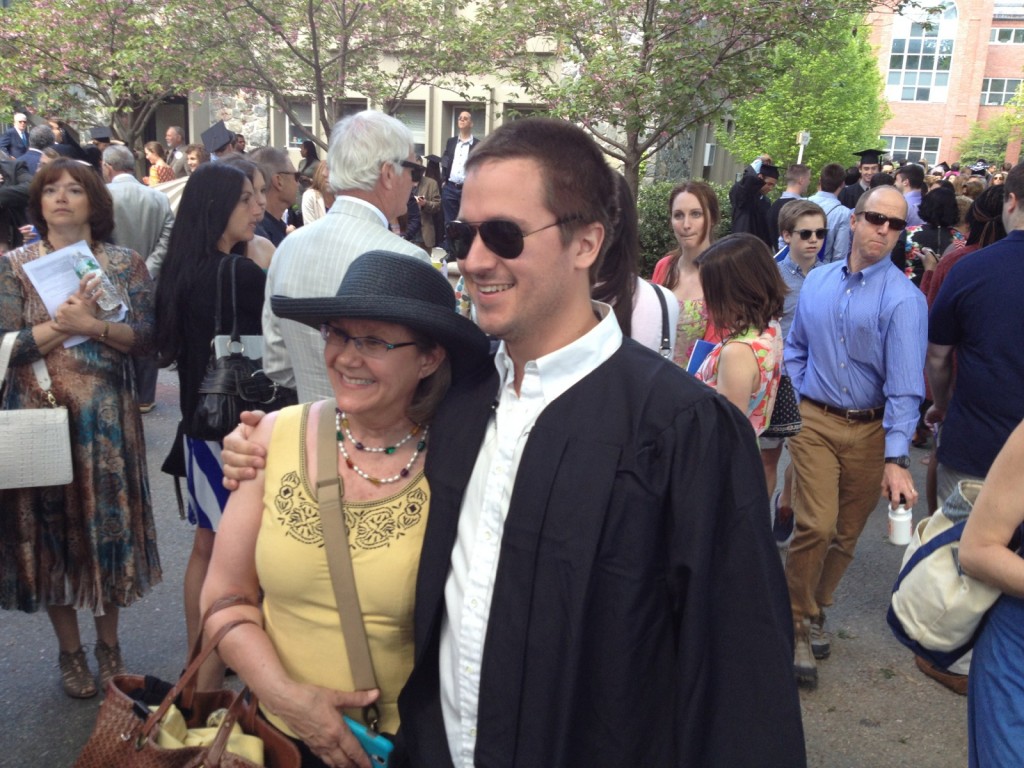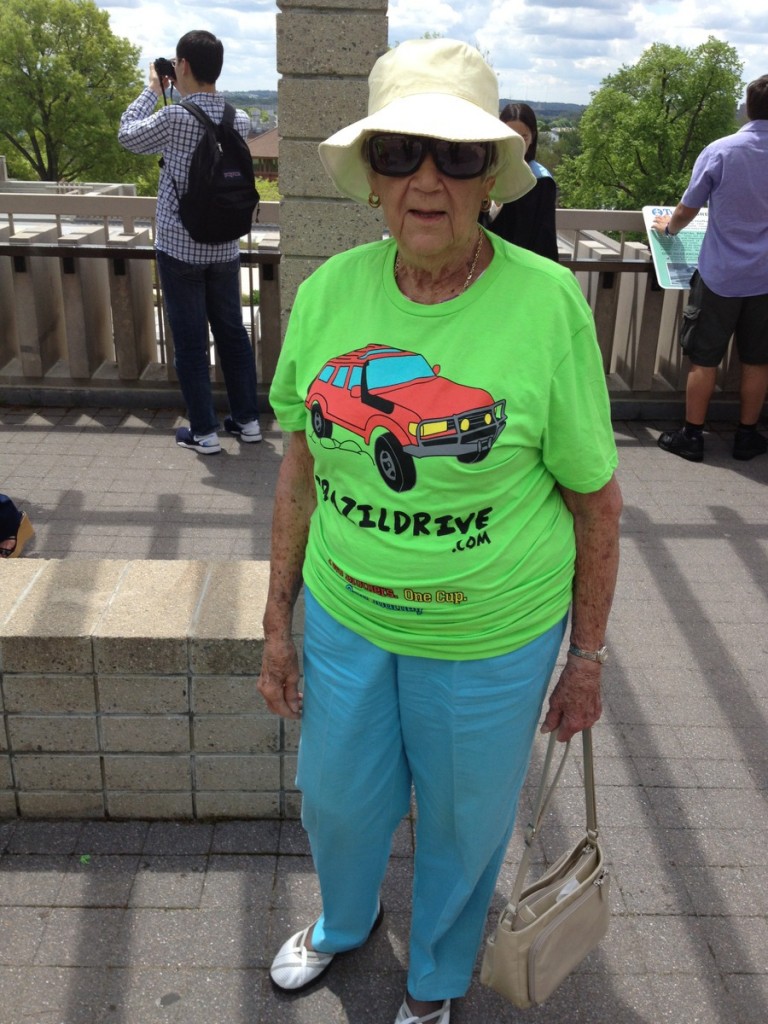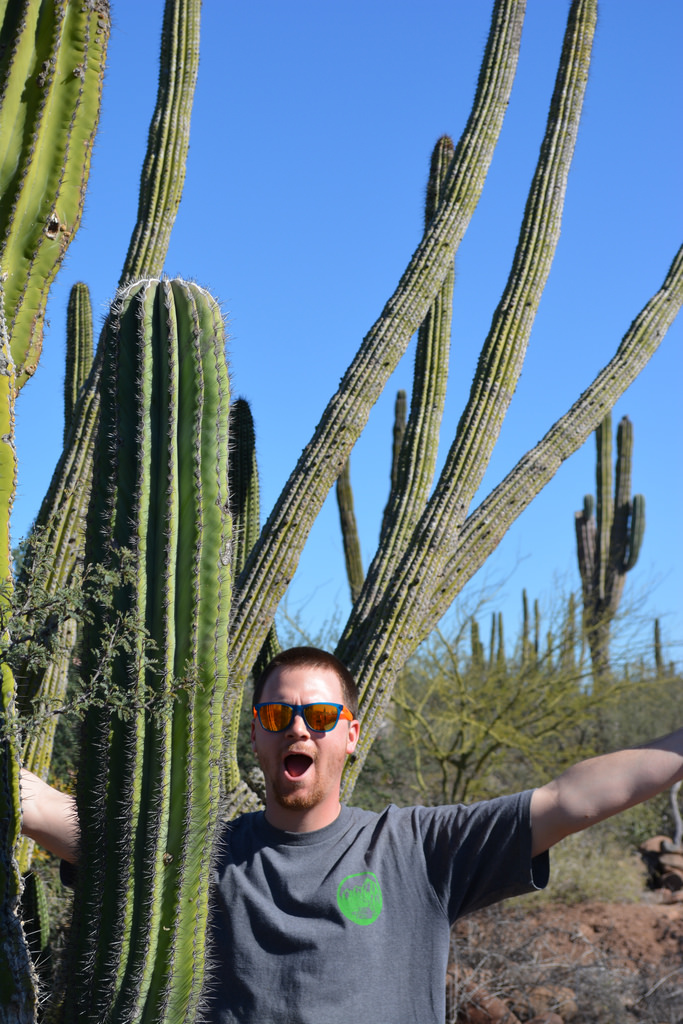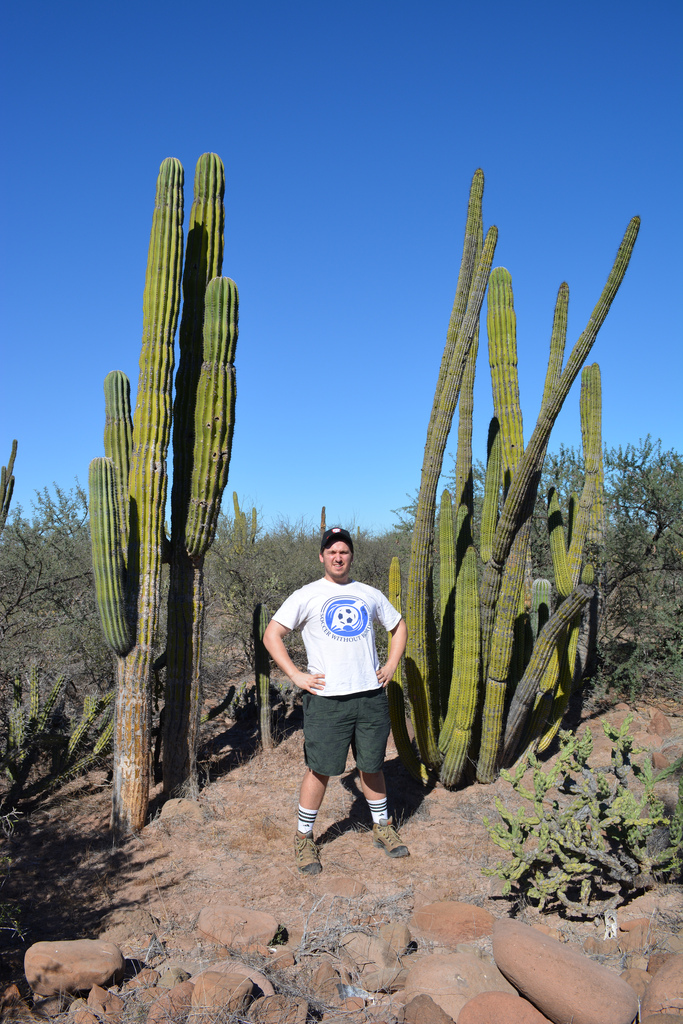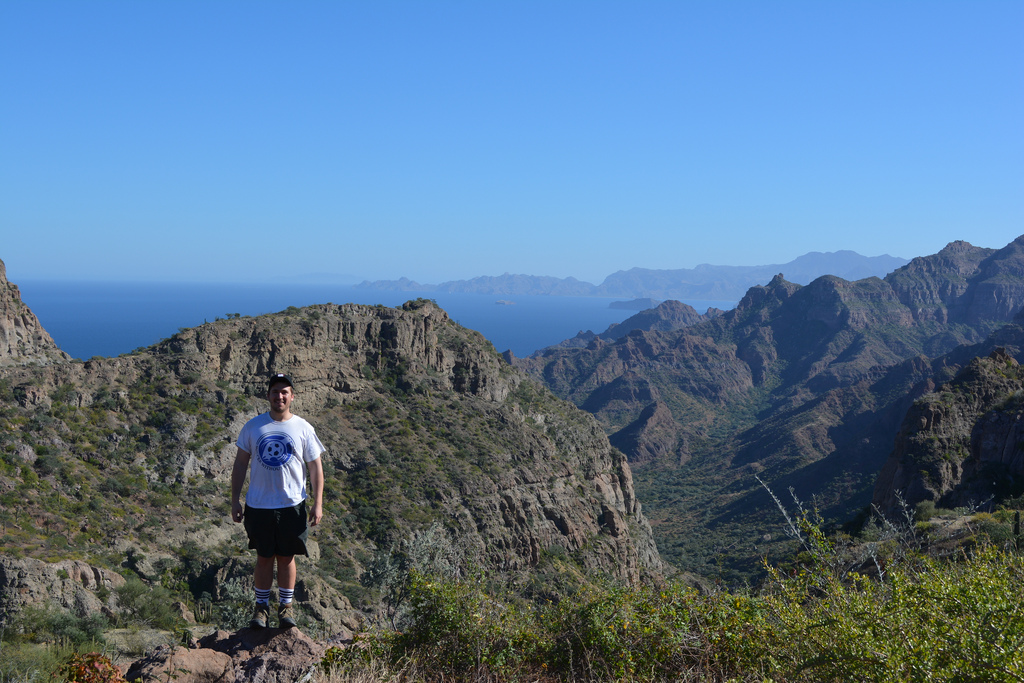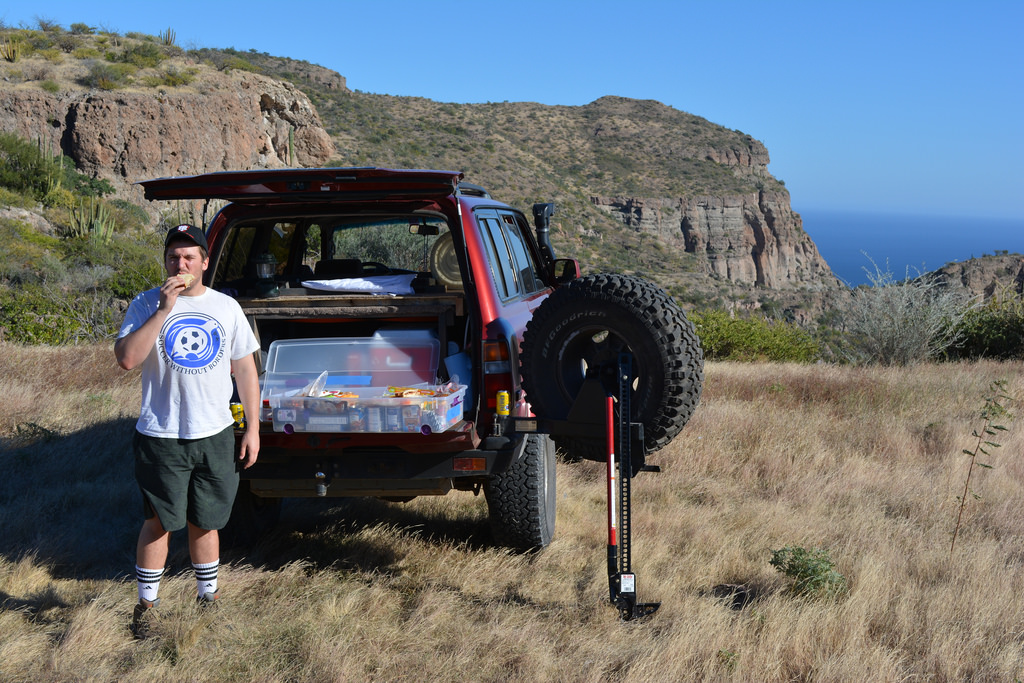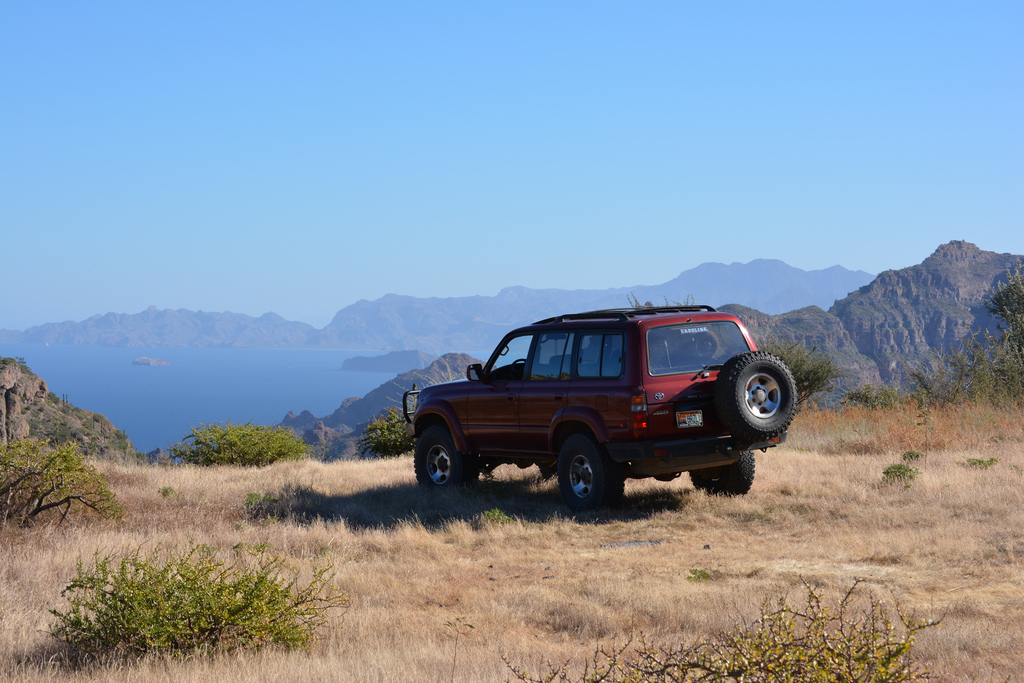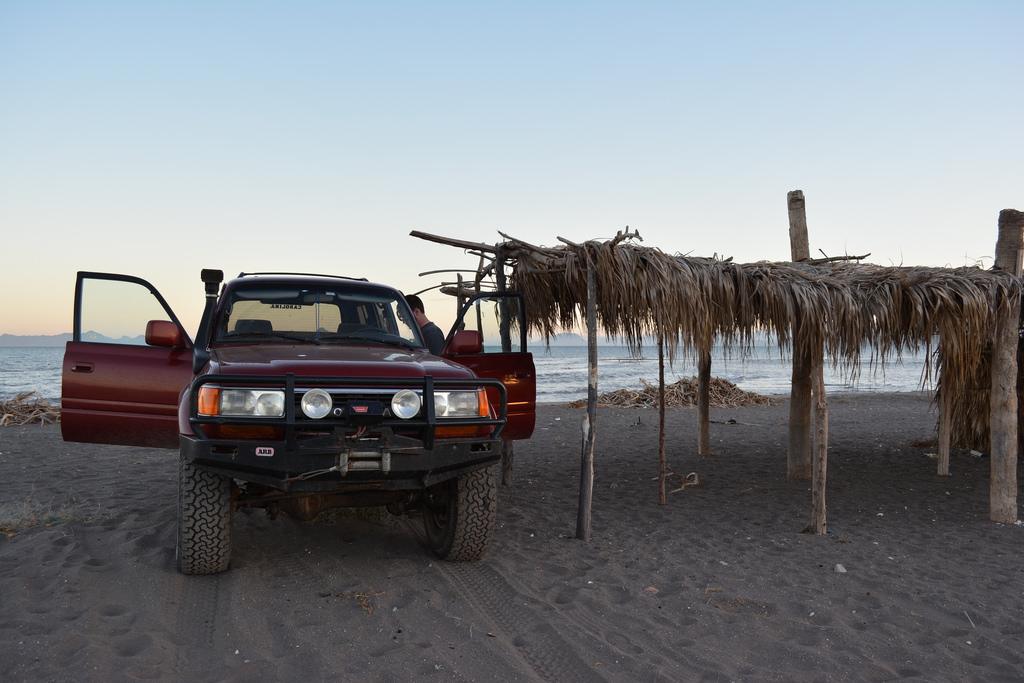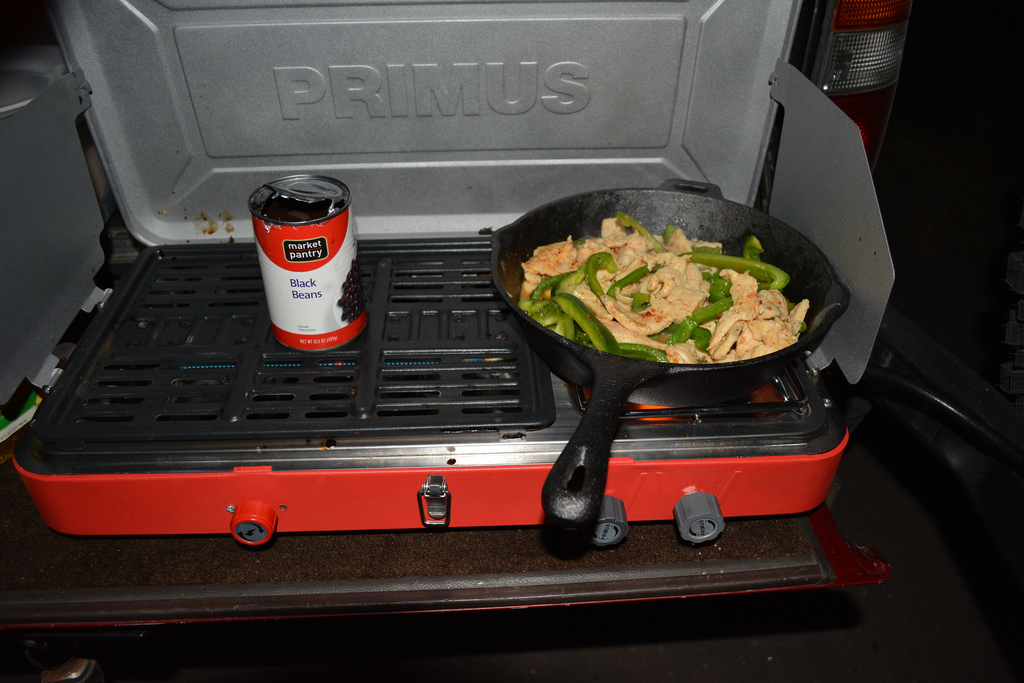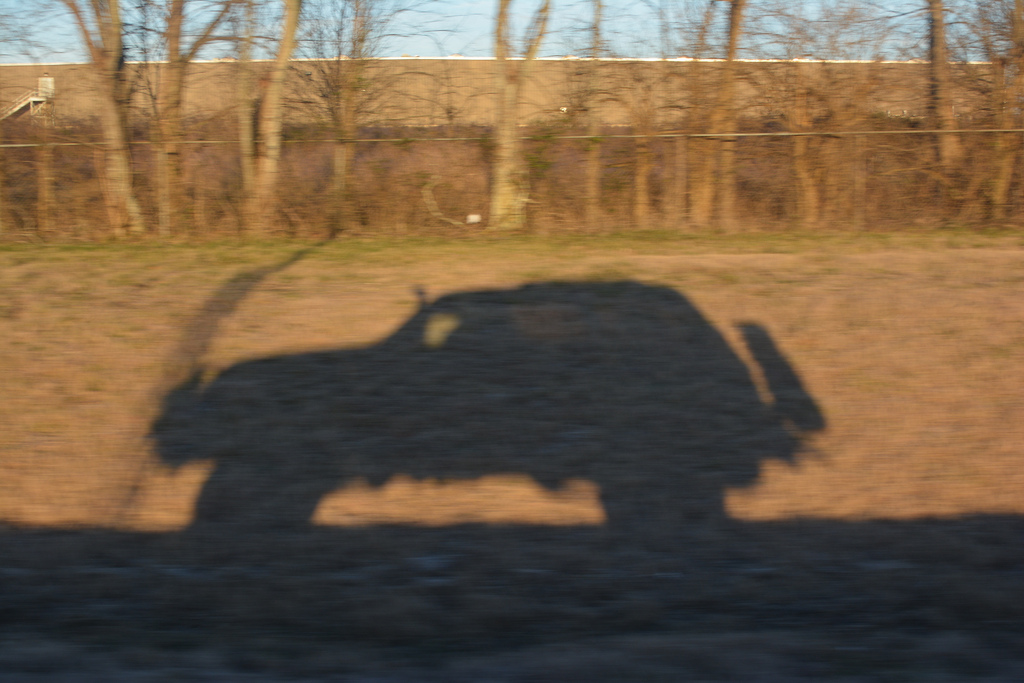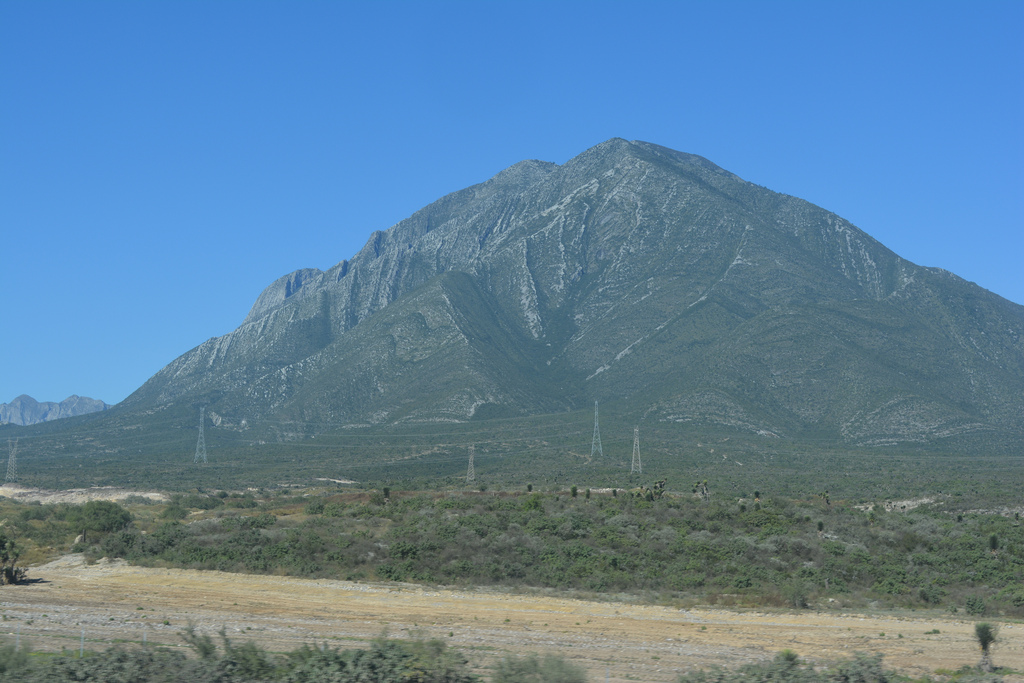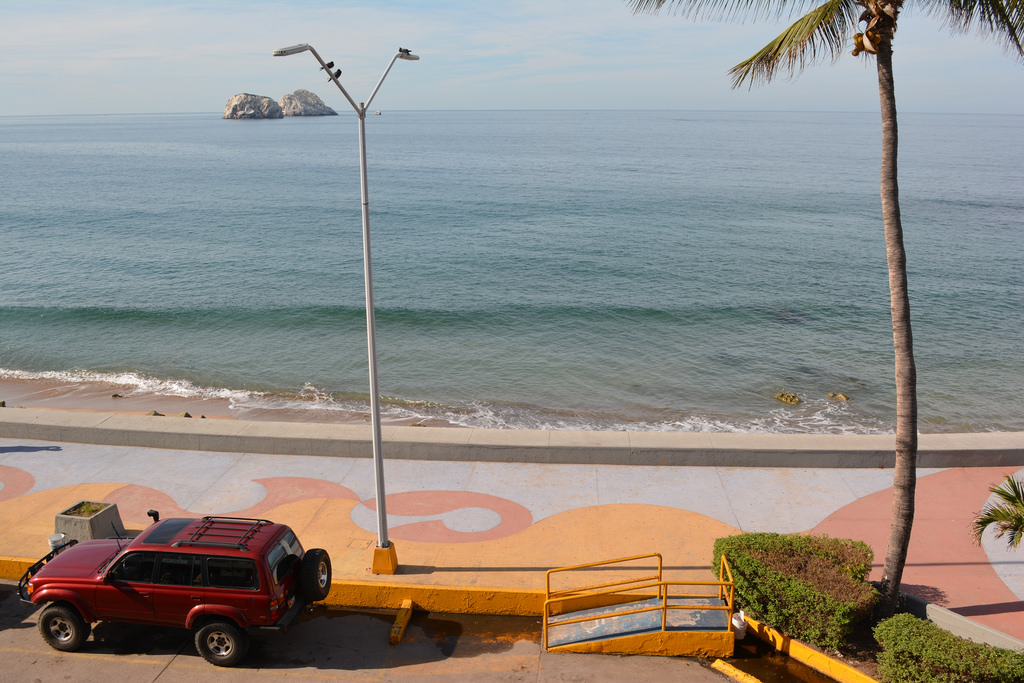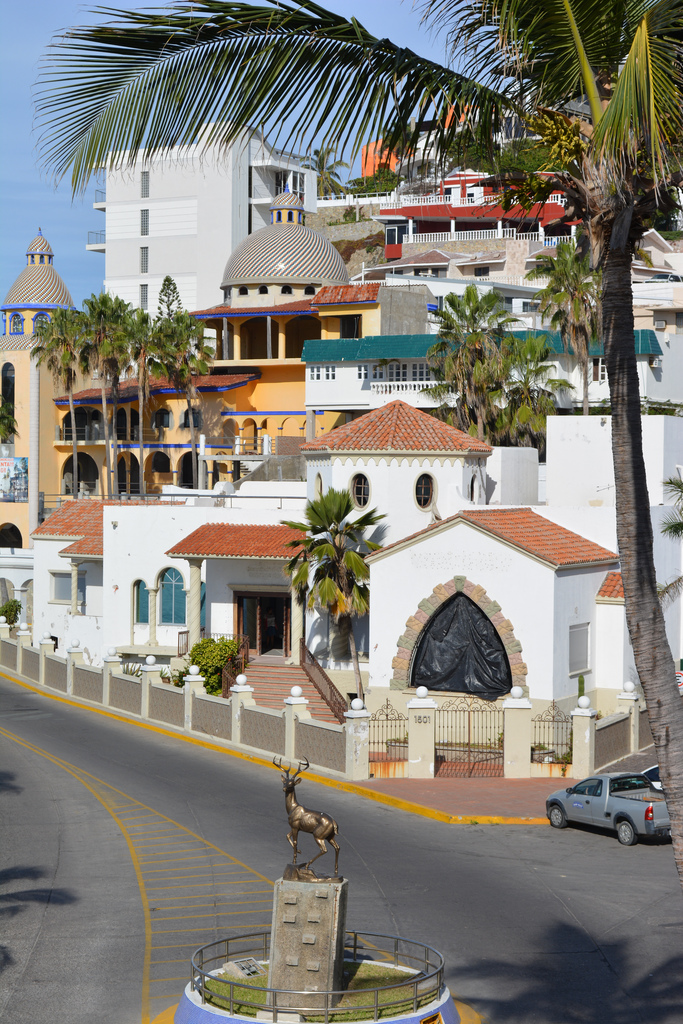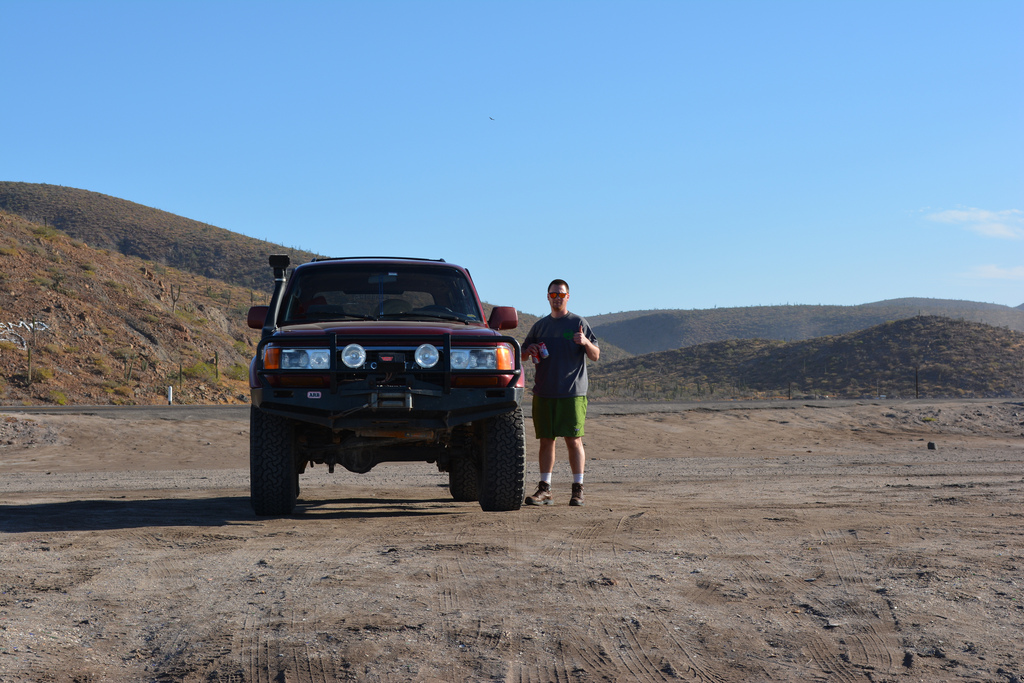We left the Ecuadorian National Park, Refugio de Vida Silvestre Pasachoa, at 4:30 in the morning, anticipating another long day of driving. Unlike most other long days of driving in Central and South America, we actually made very good time, and got to the Ecuador-Peru border at Macara well ahead of schedule. We had planned to spend another night in Ecuador and cross over in the morning, but we still had nearly an hour of sunlight left and decided to go ahead and enter Peru. Leaving Ecuador was a breeze. Migration. Stamp. Customs. Signature, stamp. 15 minutes and we were done. South American border crossings were so much better than any in Central America!
And then we tried to get into Peru.
We crossed the bridge that represented the Ecuador-Peru border and parked along the road outside of the Peruvian immigration building. We walked in and handed over our passports, as usual. We were frowned at, and waved over to the Police hut. We trudged over to a different building as a light rain started to pick up. The Policia looked us over, took our passports, and began to write down all of our information (by hand) in a large book. He flipped to our Brazilian Visas instead of our actual passport information, and it took us a few minutes to explain to him that we were not FROM Brazil, we were going there! While this was happening, a group of Peruvians came in, and he ushered them in front of us and did their paperwork first while we waited. Finally, after making sure David wasn’t lying about his age a few times (he wasn’t), we went back to the immigration office and got our passport stamps. Then, we had to go to the customs office next door and get our Permiso Temporal de Vehiculos for the Land Cruiser.
The customs agent we found there was a paunchy, older man in his 50’s who immediately let us know that we were making his life very difficult. I handed him all of the necessary documents (Passport, License, Title, and Registration). He shuffled through them and looked them over. He asked for our insurance and I gave it to him. He looked over the documents again. He asked for the VIN number. I showed him. He asked what color the vehicle was. He asked for copies of all of the documents. Seemingly satisfied, he turned away from us and sat down at his computer for 15 minutes.
Eventually he turned back to us asked for the vehicle VIN. It was exactly the same as the first time, as far as I could tell. He asked what color the car was. I frustratingly pointed to it again and told him. He wanted another copy of my drivers license. We were getting fed up, and it was already after dark, which would make finding a campsite very difficult. He typed away at his computer for another 20 minutes. Finally, he printed out a tiny slip of paper and had me sign it. He stamped it and handed it to me. This was the import permit we had been waiting this whole time for? An hour and a half later, we were ready to enter Peru.
Well past dark, but ready to find a place to camp, David and I went back out to the car and got in. We sat for a few minutes with the engine running, looking at our map and trying to decide how far we would go before stopping for the night. After a couple more minutes, we turned the map light off and I put the car in reverse and started backing up to hit the road.
And hit something else.
Shit.
Some guy in a pickup truck had parked behind us while we were looking at the map. We never saw his headlights. He had parked behind and to the right of us, perfectly in my blind spot. I put the hazards on and got out of the car.
He was not happy. I had scraped the front-left of his car, just outside the headlight, with the back-right of my bumper. Of course, the Land Cruiser won that battle. The damage was fairly minor, but would definitely require some body work. The commotion caused the customs agents, three Policia, and a large number of bystanders to immediately swarm around our two cars. The man’s wife got out of the passenger side, yelling.
“Tengo seguro,” I said, as they all started yelling at me in very fast, angry Spanish. “I have insurance.” The man was talking to me, his wife was yelling at me, the main policeman was jumping in, and the bystanders were all offering there opinions on this stupid gringo who had hit a local man’s car. It was very dark. To say the situation was tense would be an understatement.
“I have insurance,” I said to the policeman.
“Yes,” he said, “but this man is a local. You are a foreigner. It is not the same.”
“I have international insurance here in Peru.”
“That is for your car only. You damaged his car, so you need to pay him.”
This was not the case. We had purchased a broad international policy before we left the States, in addition to a local S.O.A.T. policy upon arriving in South America. But the situation was starting to look bad for two Americans, 7,000 miles from home, who barely spoke any Spanish. So I asked the driver what it would take. I ended up giving him $200 US from our emergency stash and, as the cop suggested, got the hell out of there. So far, our first night in Peru couldn’t have gotten much worse.
We continued along the highway for a little ways, and at the first toll stop we asked if there were any safe places to camp along the highway. The attendant told us he wasn’t sure, but that it was probably safe a little ways toward the next town. We found a nice little turn off in what appeared to be an old quarry; a big flat space just off of the main road, but with a few trees separating us from it. We got out, made dinner, and had a beer. It was relieving to finally be safe and at camp. We put up the sleeping platform and got in our sleeping bags to go to sleep.
It was around 10:30pm. We were dimly aware of the cars and trucks on the highway passing by as we began drifting off to sleep. At times, the dull rumble of the tractor trailers ghosting by in the night can be somewhat relaxing. As things were getting quiet, though, a spotlight swept across the windshield from the road and blinded us. We both looked up and saw a white pickup truck on the highway, shining a spotlight from side to side in the darkness. As soon as the spotlight had swept lazily passed us, it snapped back onto our car and stayed there. We had been spotted.
The white pickup truck slammed on the brakes and shifted into reverse. We could now see men dressed in black piled into the back of the pickup truck. One was shining the spotlight. Two others had large black guns. It began reversing on the highway until it got back to the entrance, and only exit, we had found for our campsite. I climbed into the front seat and turned the car on.
They pulled into the open space that was our campsite and parked in front of the Land Cruiser. Men in black uniforms jumped out of the pickup truck and began heading towards our car, surrounding us. I cracked the window. While three men, one carrying a shotgun, circled the car, the man who appeared to be the leader came to the drivers side door with another two and demanded to see our documents. My foot hovered over the accelerator as I handed him my passport through the cracked window.
“Ellos son Americanos!” the leader exclaimed.
“What are you two doing here?”
I tried to explain that we were just camping. We were driving to Brazil for the World Cup and didn’t want any trouble. Just passing through. The mood changed immediately. Our hearts were still beating audibly in our chests as the three men from behind the car pushed there way to the front and started asking questions excitedly. What State were we from? How was the drive to Peru? Were we going to any games in Brazil? On closer inspection, none appeared to be older than 25, except for the man in charge, who might have been 40. We had some questions of our own, too. Who were they? What did they want?
It turns out that they were “Serenazgo”, a kind of local police patrol. It was unclear just how “official” they were, or if they were more of a local militia/vigilante group. They were definitely NOT the normal police that we had encountered earlier, nor the normal military. They all had matching uniforms, but only a few had any other equipment (shotguns). The story emerged that the area we were camping in could actually be pretty dangerous at night, and they were on patrol. Two people had been shot and killed a few months prior in the very spot were were trying to make camp. Damn you, tollbooth attendant!
The Serenazgo were now all smiles and had made it their personal mission to find us a safe place to camp for the night. We got back in the Land Cruiser and followed them into the next town a few kilometers away. There, they woke up a gas station owner and “asked” him if we could sleep in the safe and well lit gas station lot for the night. The owner reluctantly agreed. We thanked our vigilantes profusely and turned the car off as they drove of into the night. It would be a hours before we would finally fall asleep.
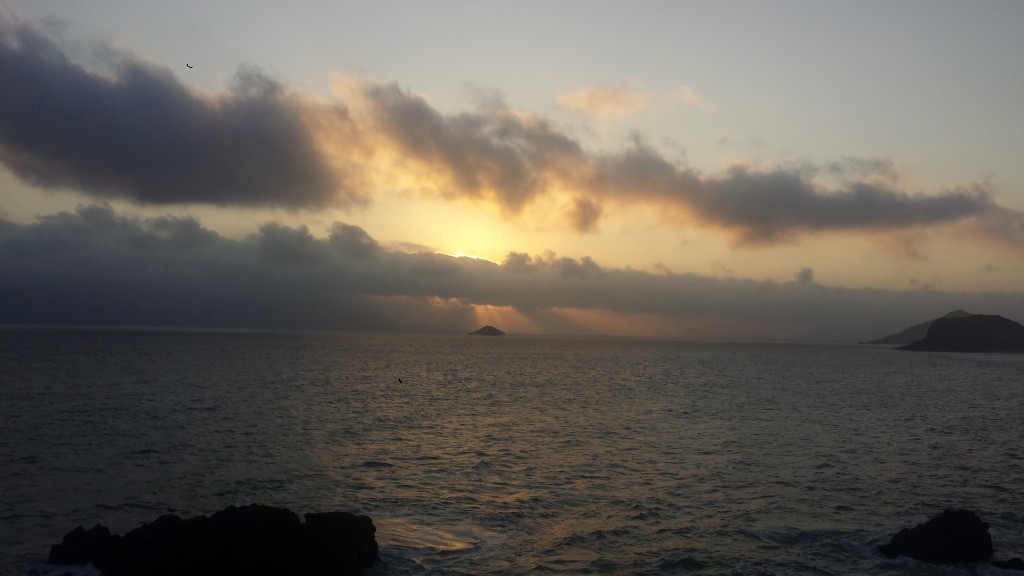
Sunset on the Pacific
The next morning we rose early again and headed South. We had yet to see Peru during the day. By making it across the border the previous day, we were able to make good time down towards the Pacific coast. We had expected Peru to be lush and mountainous, but the first day was almost entirely flat desert. It made for some good Game of Thrones listening time. We arrived in the town of Chimbote that afternoon with a few hours of sunlight to spare. We found a grocery store and stocked up on some supplies; mostly beer, water, and something to eat other than cliff bars. We took off along the coast to look for a place to camp.
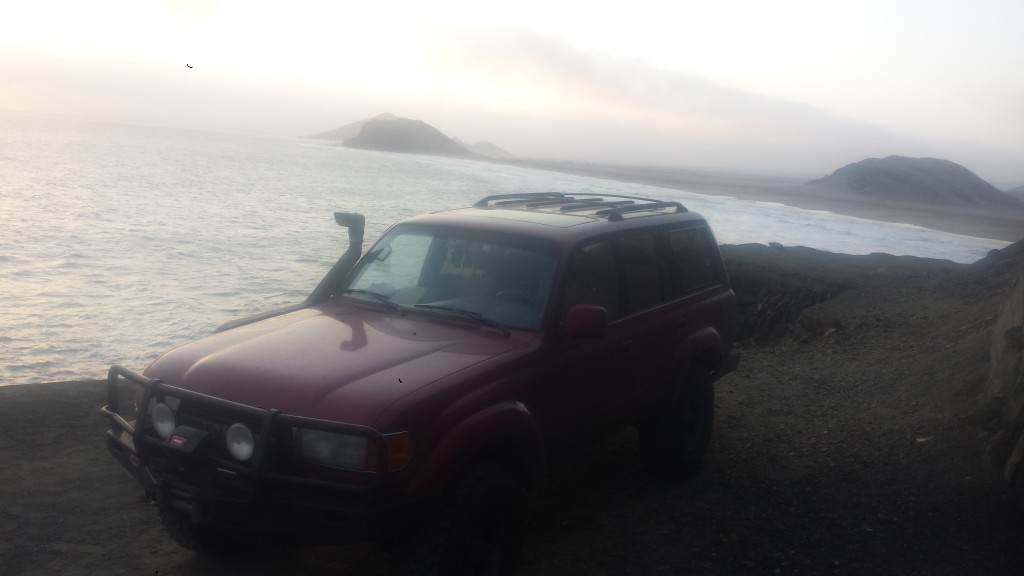
Camping on a cliff near Chimbote
We found a turnoff to a little fishing town on the map and took it, hoping to camp somewhere along the beach. The road took us straight down to the coast and then took a hard turn left into a large mount of rock. In the bottom of the rock was a long, narrow cave, and on the other side we found the fishing town. Not wanting to stay in the town, we turned back towards the tunnel. From the town-side, it was clear that the tunnel was fairly new. The remains of an old road around the ocean side of the mountain could just barely be made out. We decided to explore. The previous road had gone along the edge of the cliff overlooking the ocean, but about halfway across it had collapsed, leaving emptiness. We decided to camp just before the precipice, and we were treated to some spectacular views.
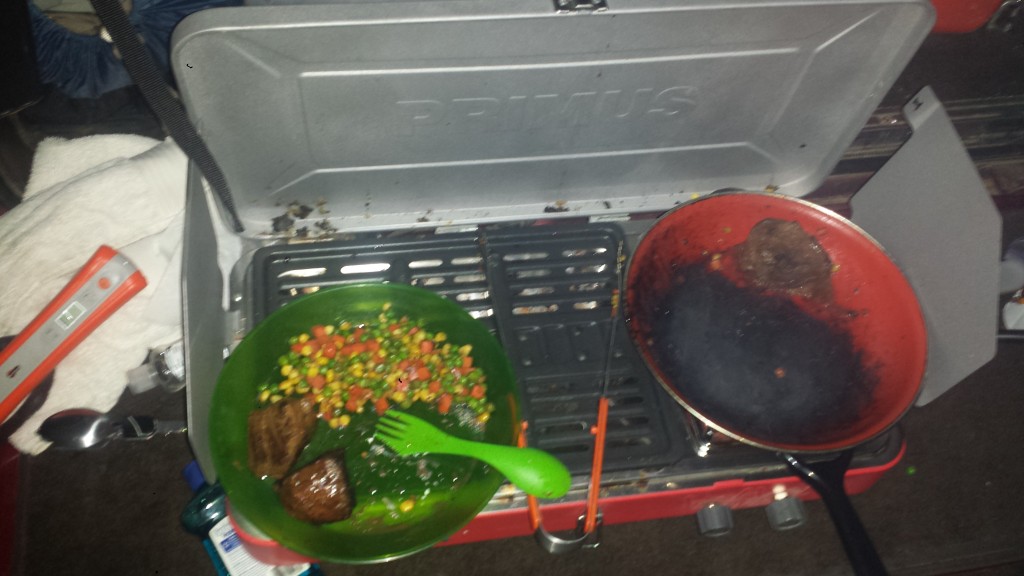
Steak and veggies on the camp stove
The next day we carefully made our way back along the cliff and got back on the highway. This time, we had a set campsite that we wanted to find. In doing research on the internet, I had found a reference to a nice beach campsite and we were going to try to make it there for the night.
We drove through Lima, the capital of Peru, around lunch time, and made it to Nazca in the early afternoon. The scenery on the drive was incredible as we drove along the Pacific coast. At times, the road was literally on the edge of a cliff, with desert on one side and the ocean on the other. We passed fishing villages with colorful boats and vast expanses of beautiful nothingness. When the road took us more inland, the enormous desert mountains served our appetite for scenery. We passed through the area of the famous Nazca Lines, but decided that a car was not the best vehicle for viewing them. We climbed a hill on foot to try to see the shapes, but had little luck.
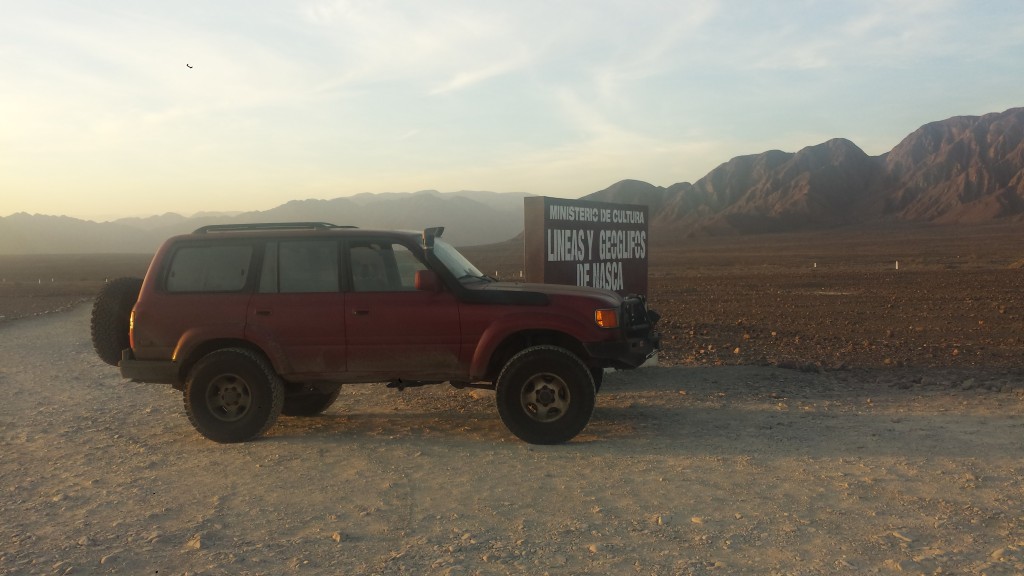
The Nazca Lines
We made it to our beach campsite at dark and were able to camp right on the beach. The campsite, as it turns out, was actually a small beach resort that probably would have been full during the summer. As it was winter in the Southern Hemisphere, we were the only people there, save for a few staff members, who welcomed us warmly. We made camp, dipped our toes in the water, and were finally able to kick our new soccer ball back and forth for an hour or so. In contrast to the previous night, it was immensely relaxing.
The next morning as we were preparing to leave at 5am, one of the staff members woke up and offered to make us breakfast, which we graciously accepted. Granola bars and diet mountain dew can get old after a few weeks. We left as the sun began to come up, and we likewise started to climb. We camped right on the beach at sea level, but by the early afternoon we had risen into the Andes and the Peruvian highlands. It happened almost without us noticing. I could feel the air get thinner and the already weak engine of the Land Cruiser begin to struggle more and more for power. Still we climbed. We passed small villages made of stone, and llamas began to appear everywhere. The mountains started out in front of us, then beside us, and then somehow beneath us. Before we realized it, we had climbed to just over 14,000 feet, according to our GPS.
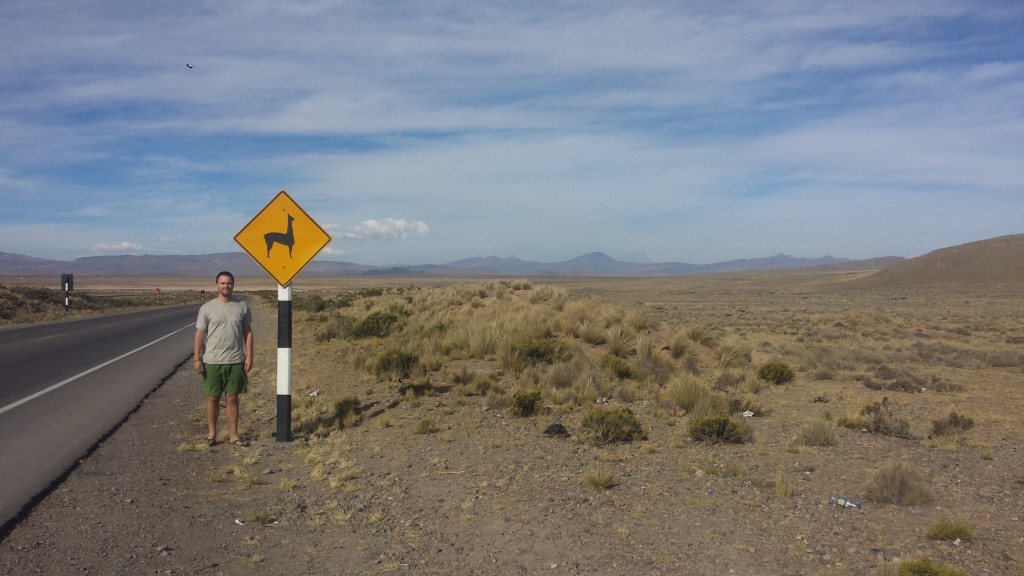
Llamas crossing?
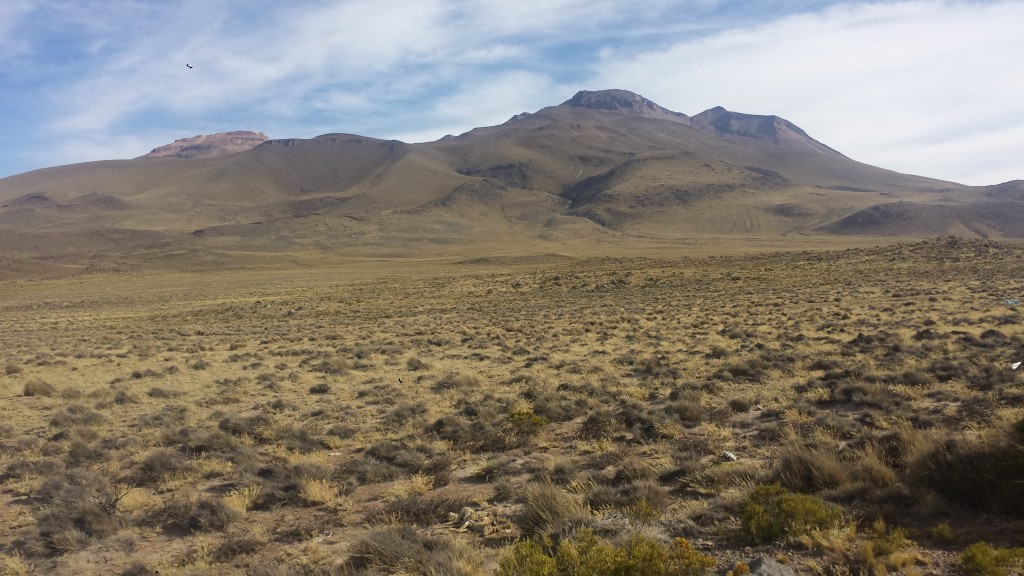
Peruvian highlands at 14,000 feet
We made camp that night, our last in Peru, on the shores of the gorgeous Lake Titicaca, which is largely considered the highest navigable lake in the world. The water level was very low, so our GPS coordinates show us as actually being in the water! It was the first night that it was actually COLD. We wore sweatpants and sweatshirts inside our sleeping bags, and could see our breath even then. We were only a few hours from the Bolivian border, and were excited to be only a few days from Brazil!
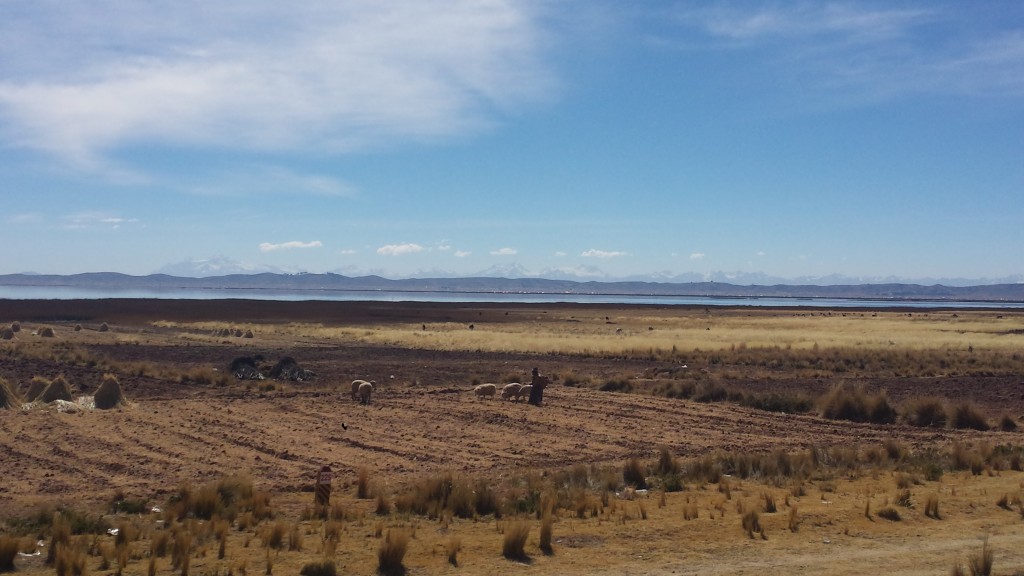
Lake Titicaca

